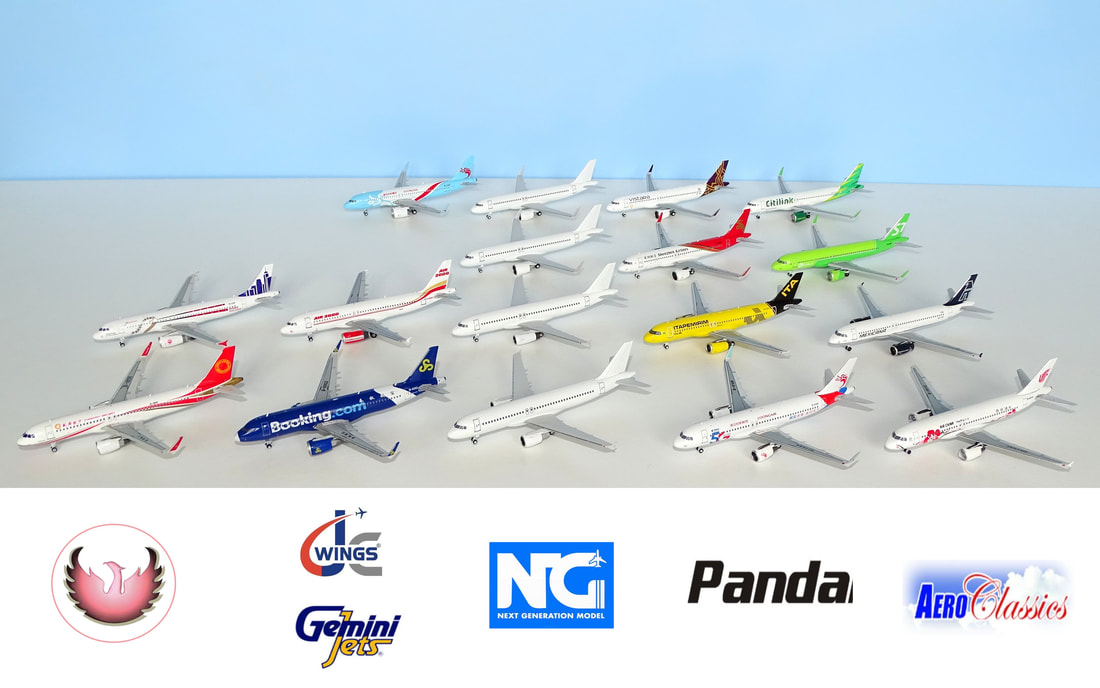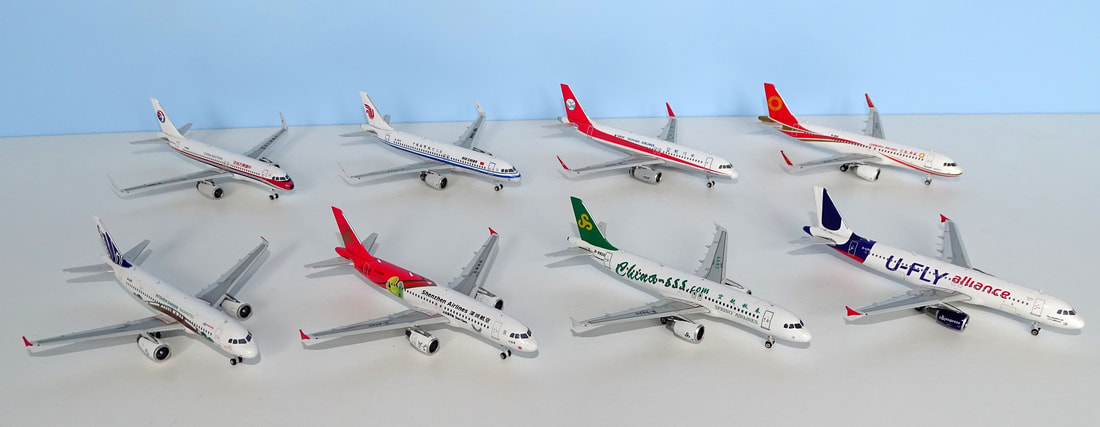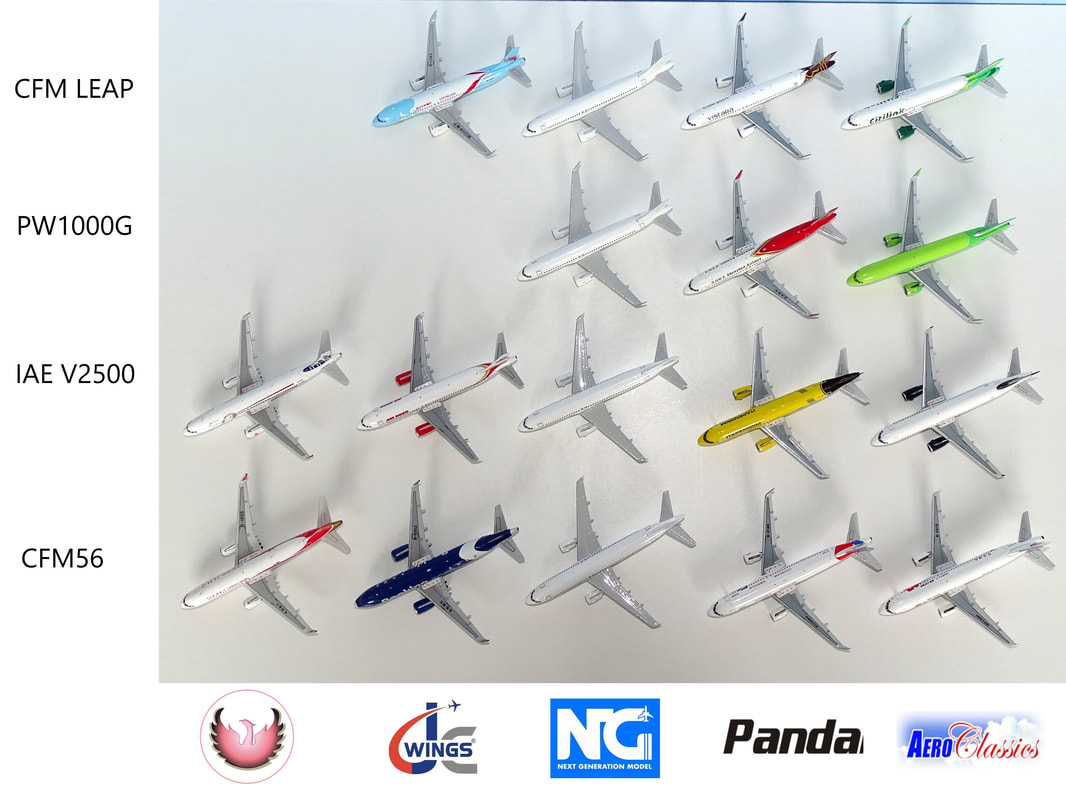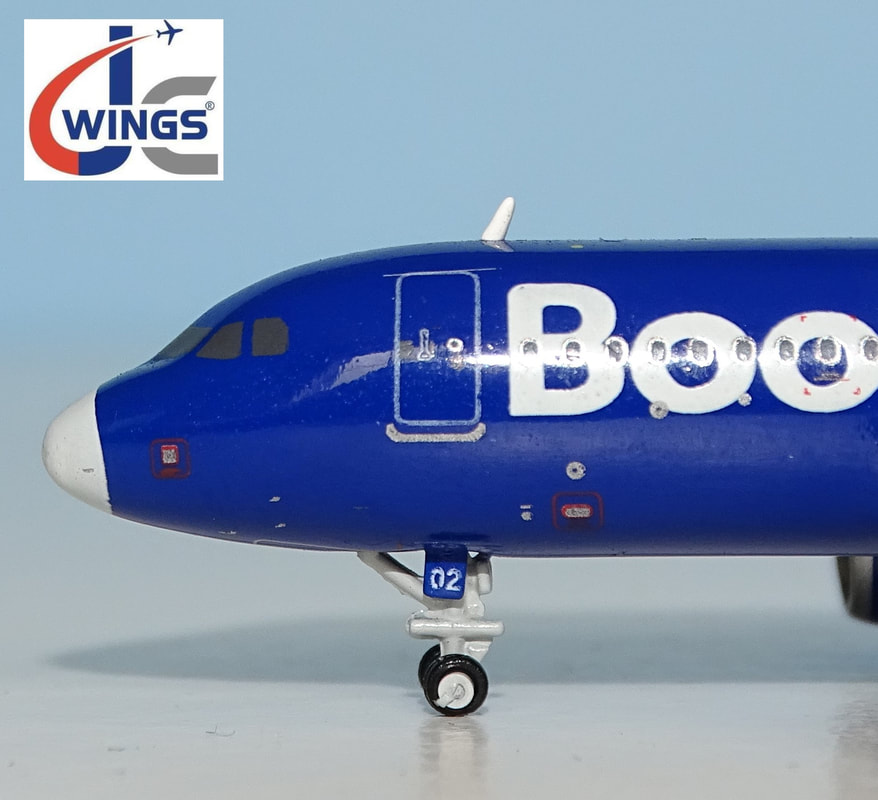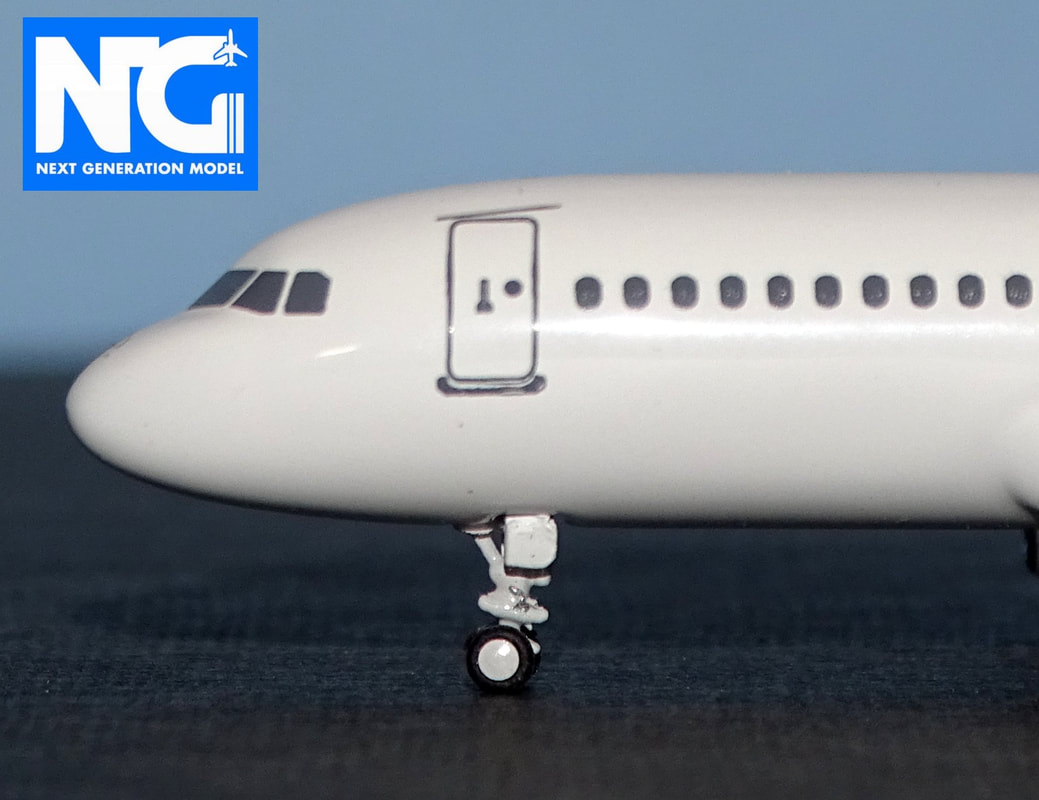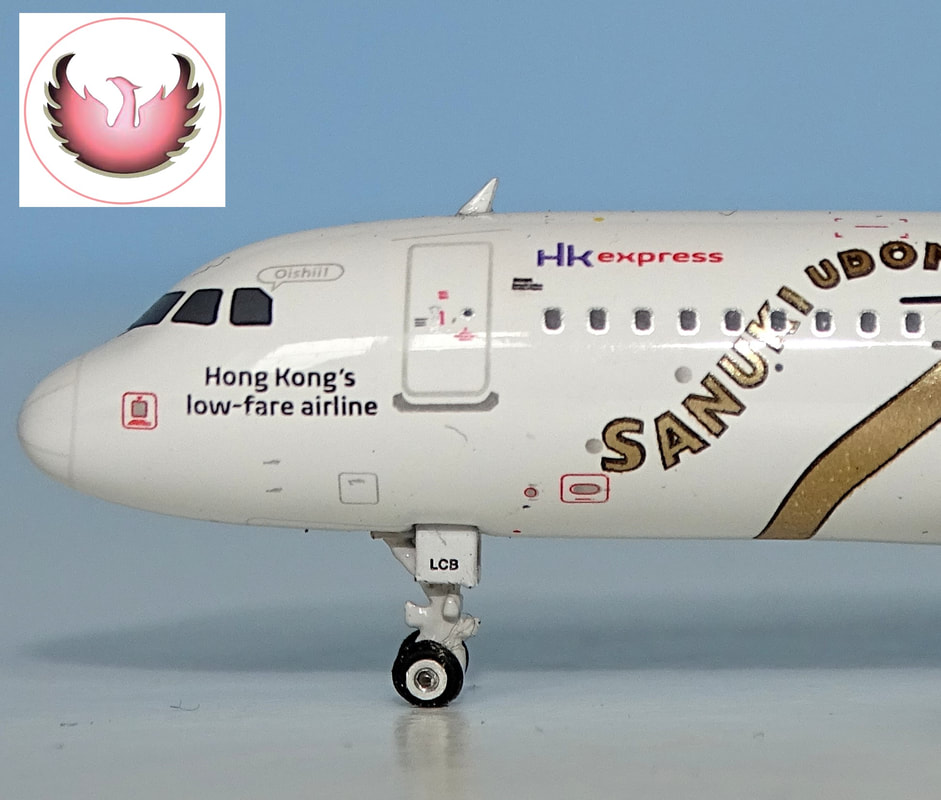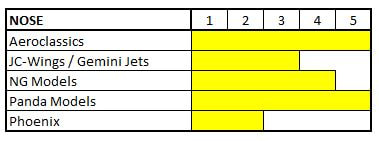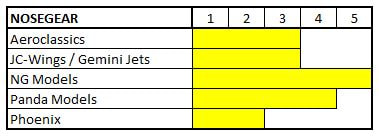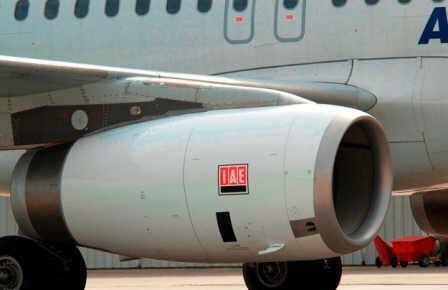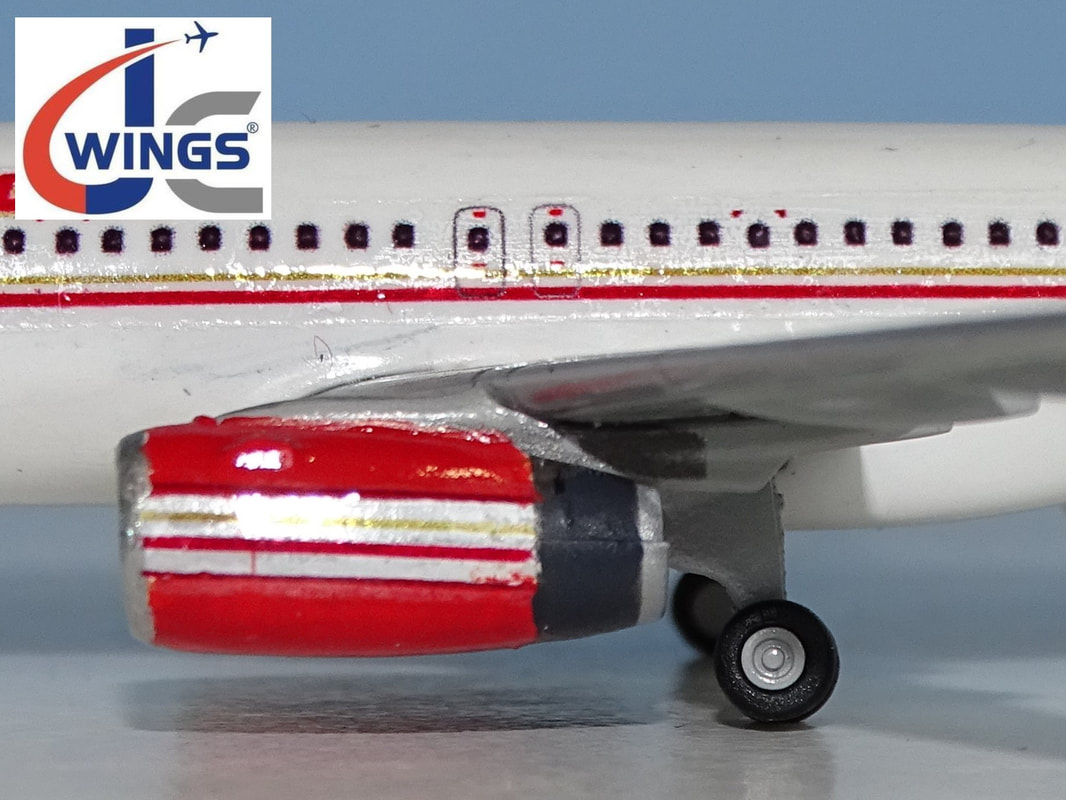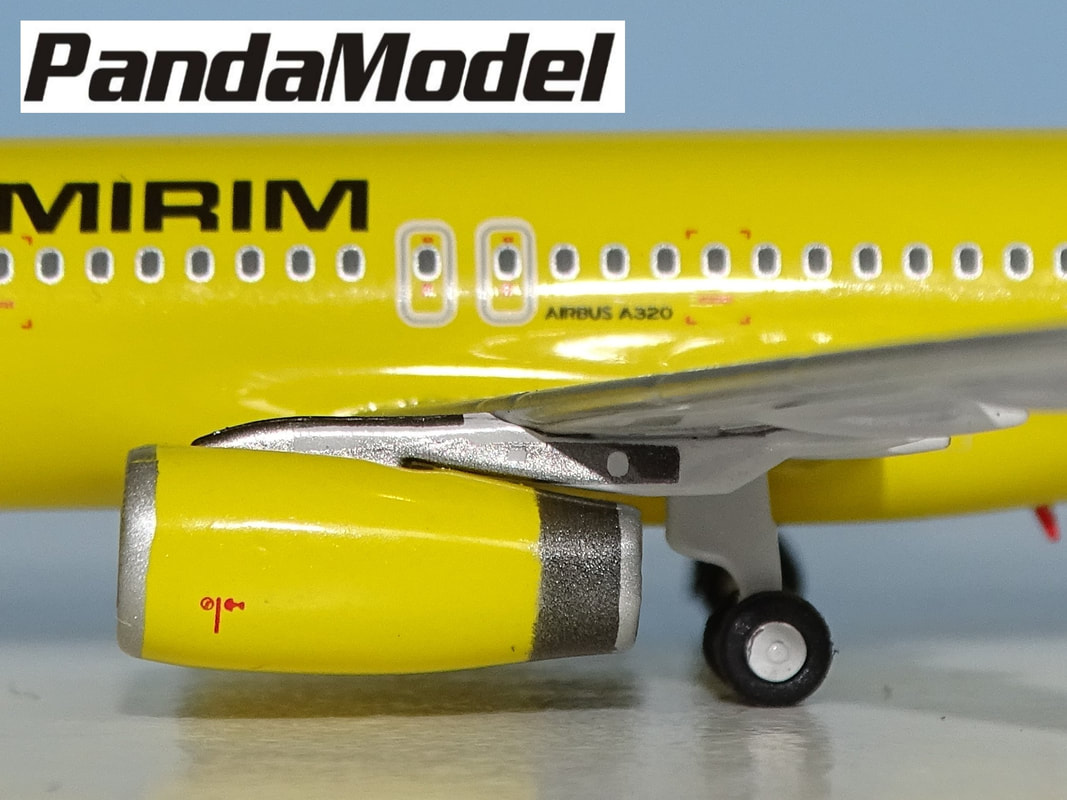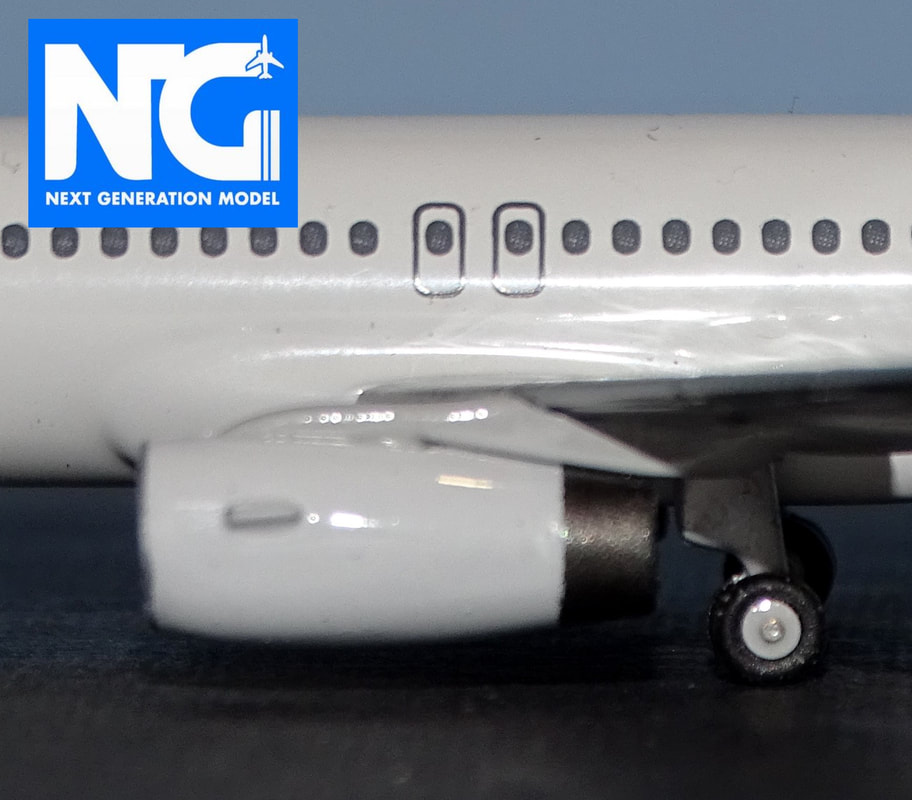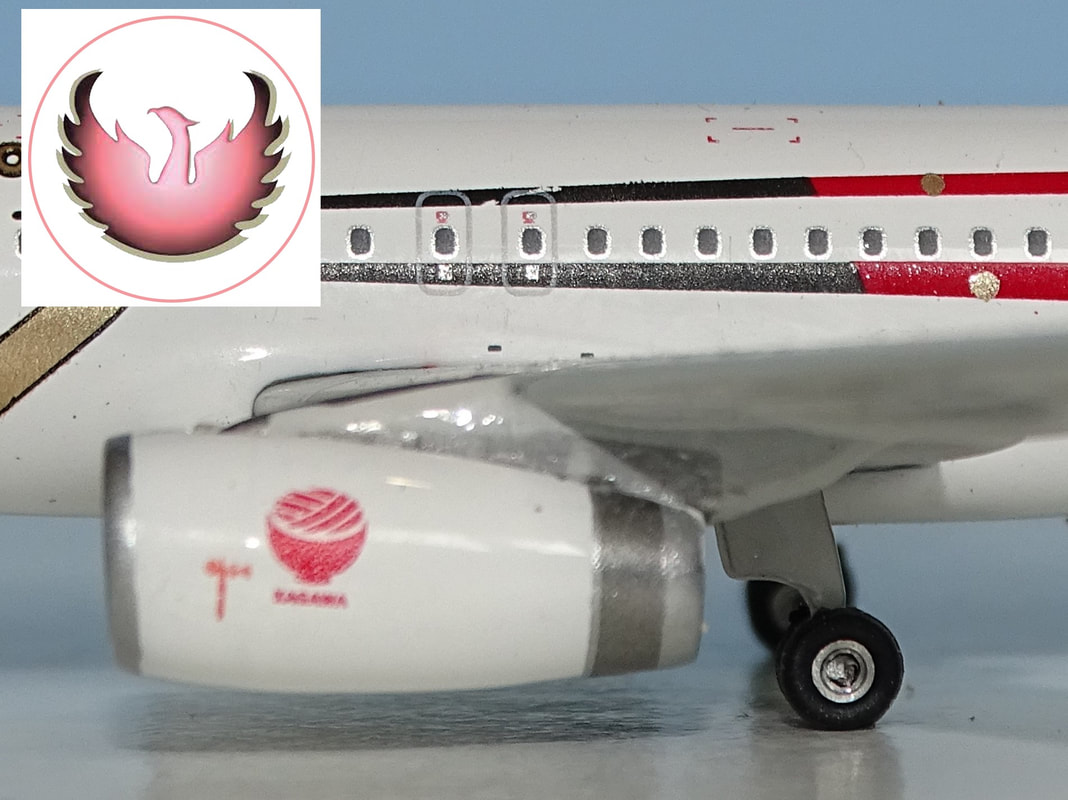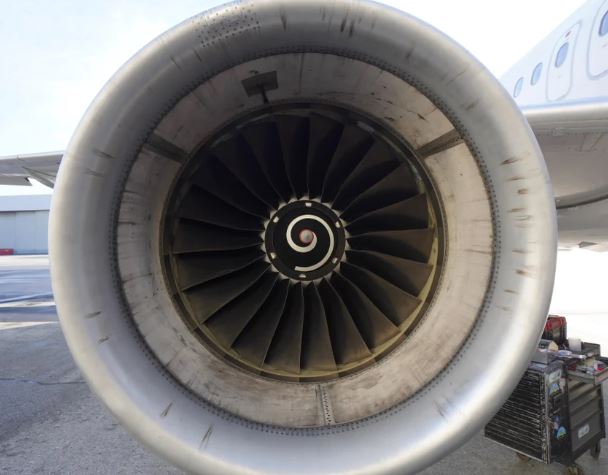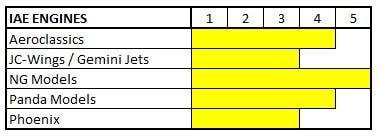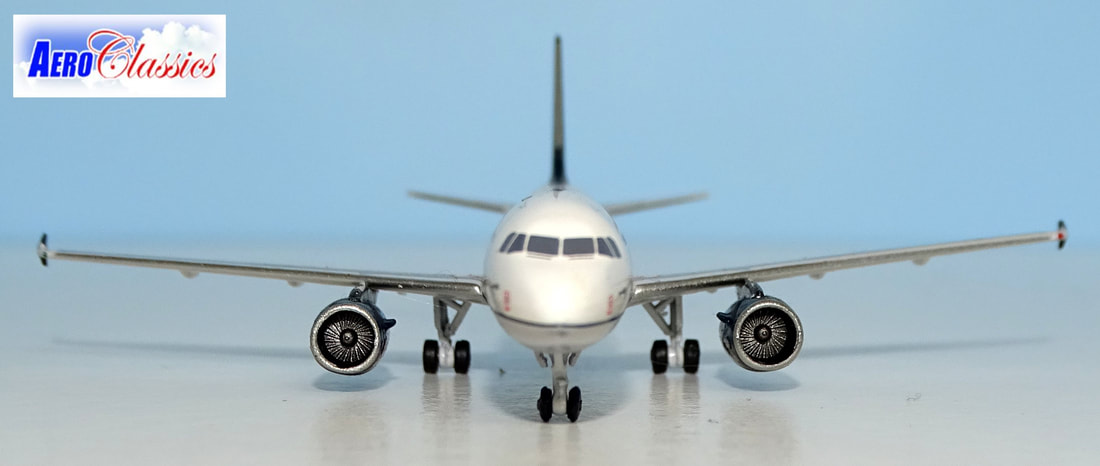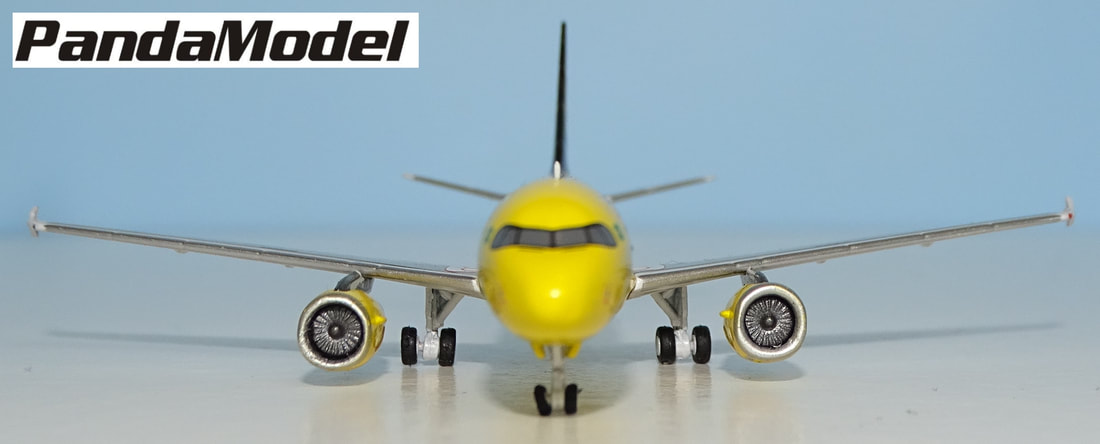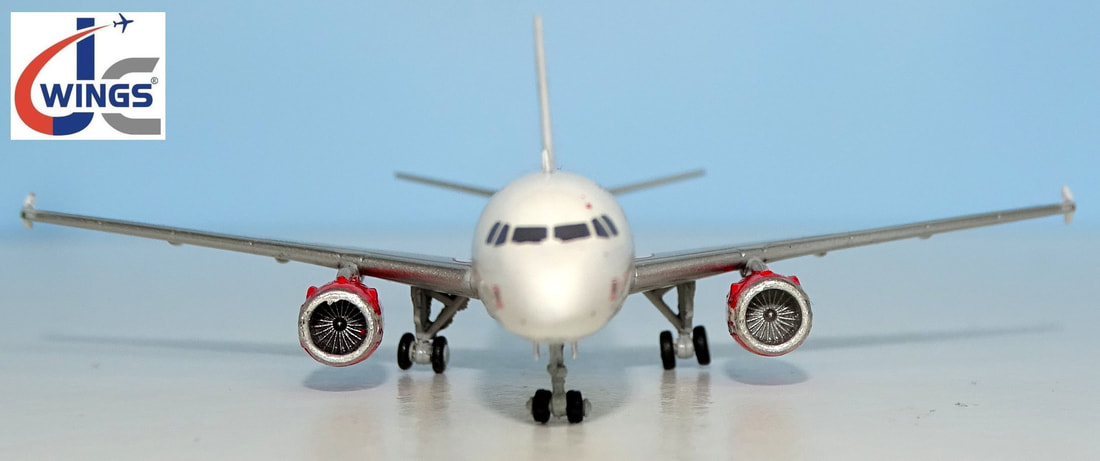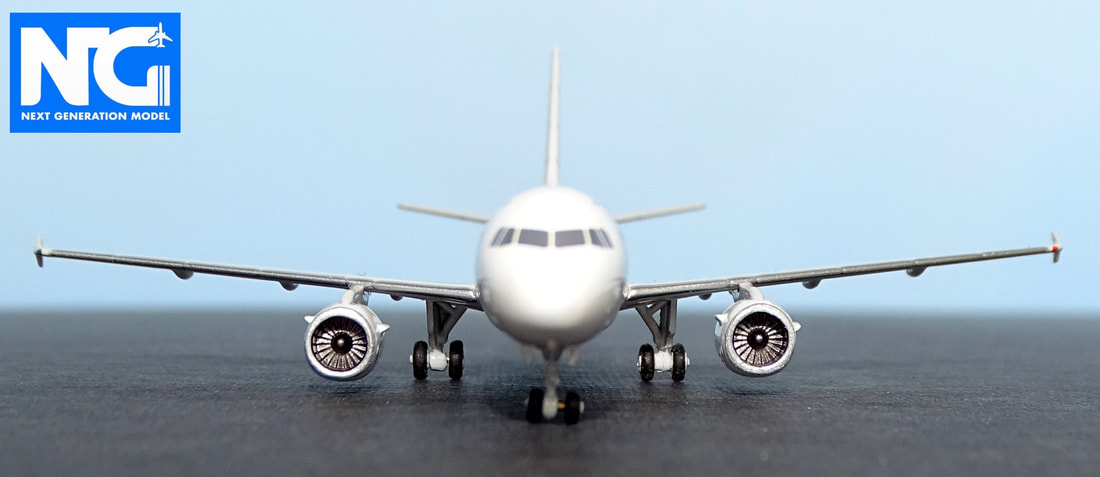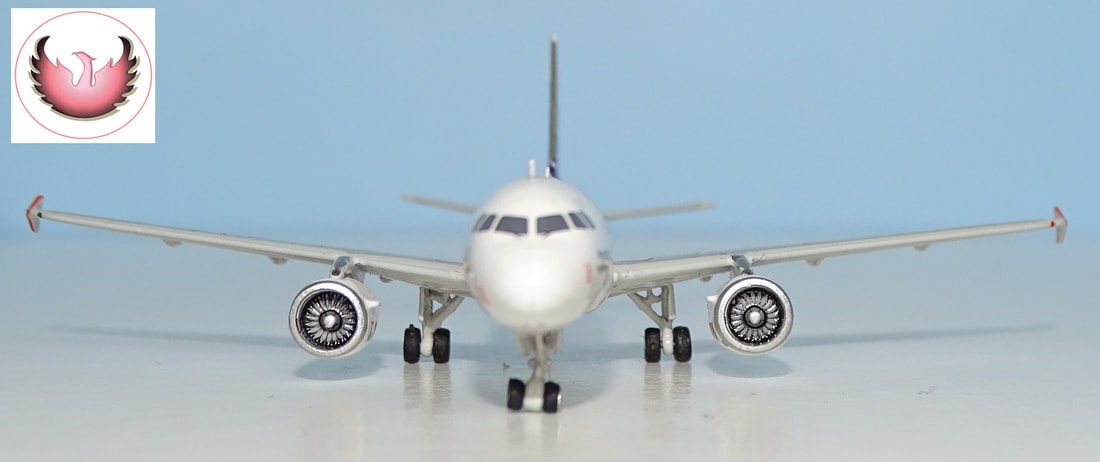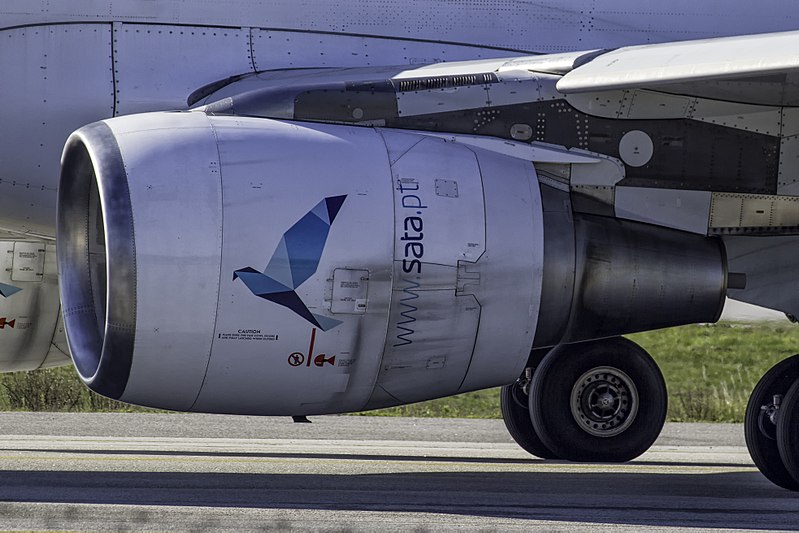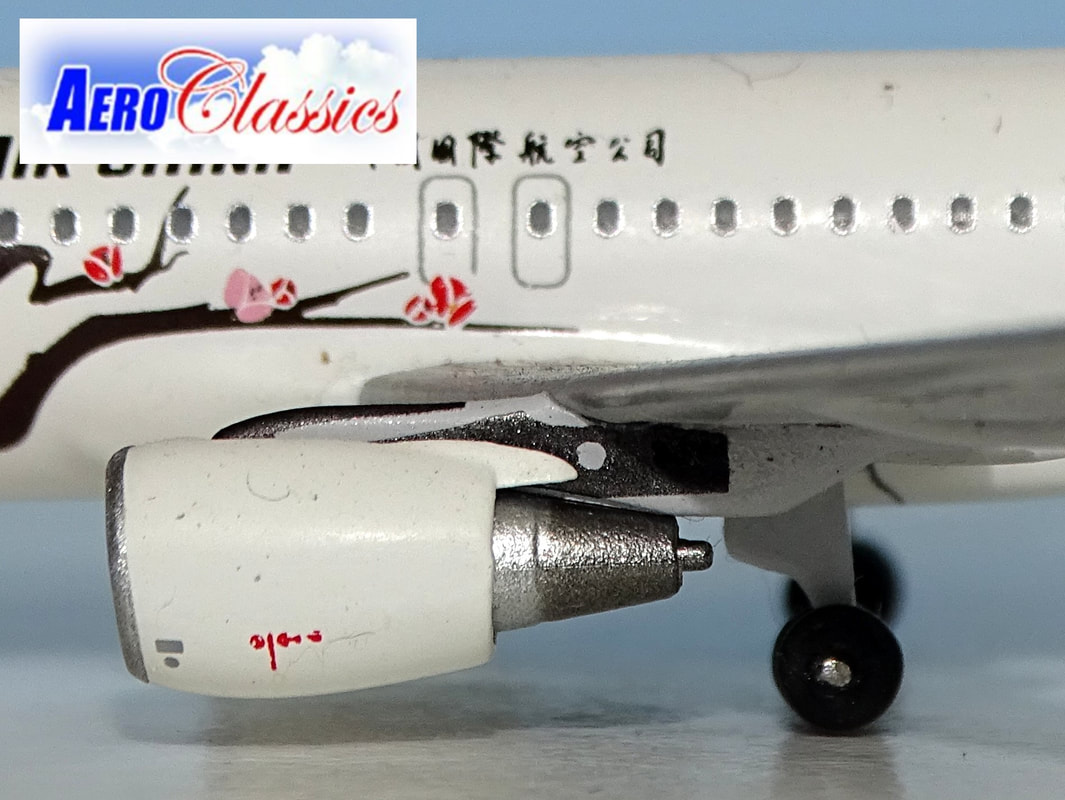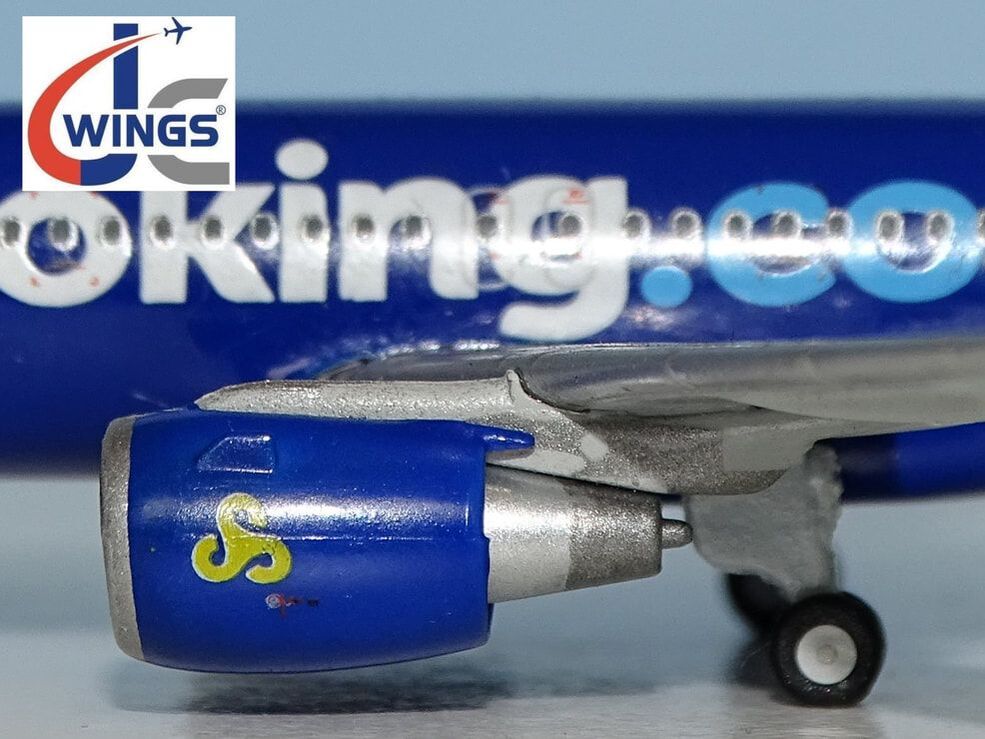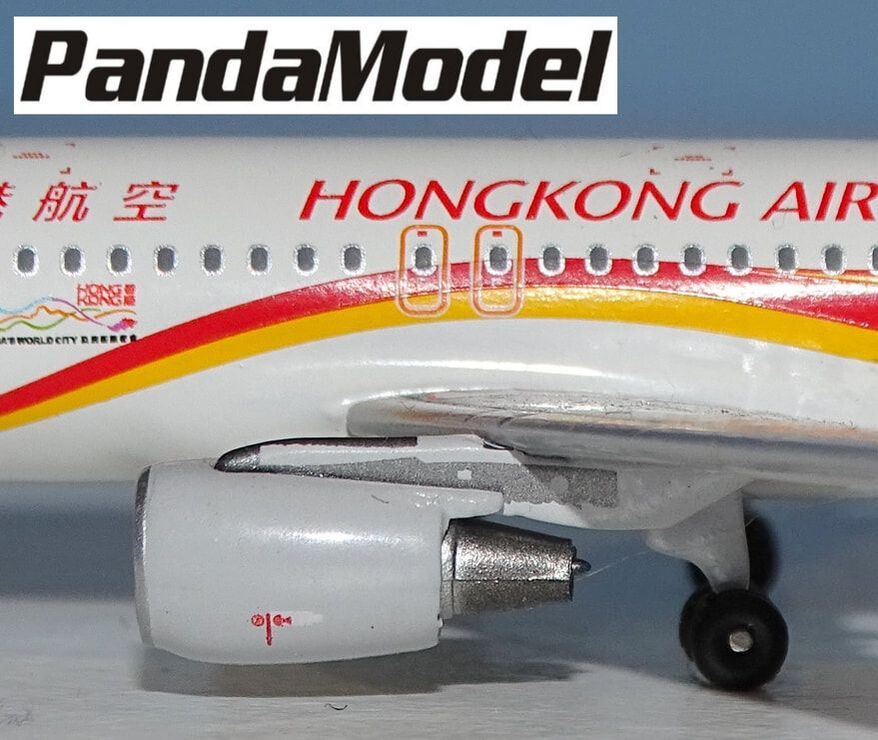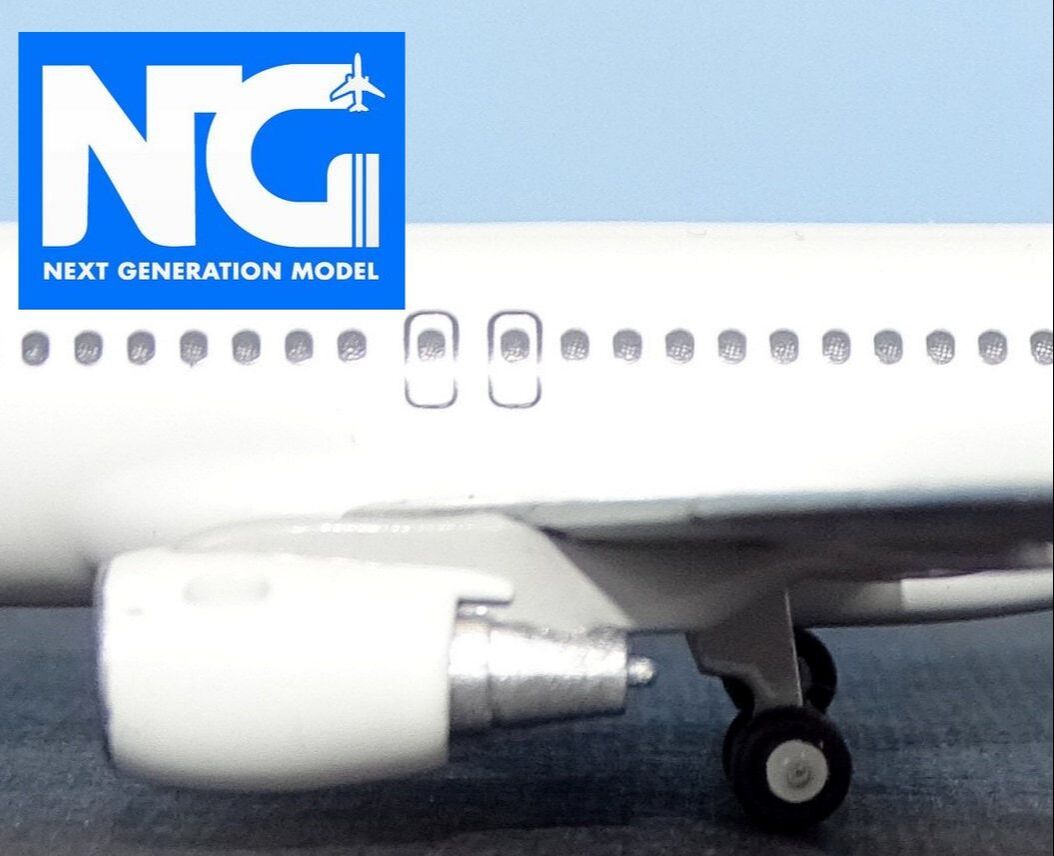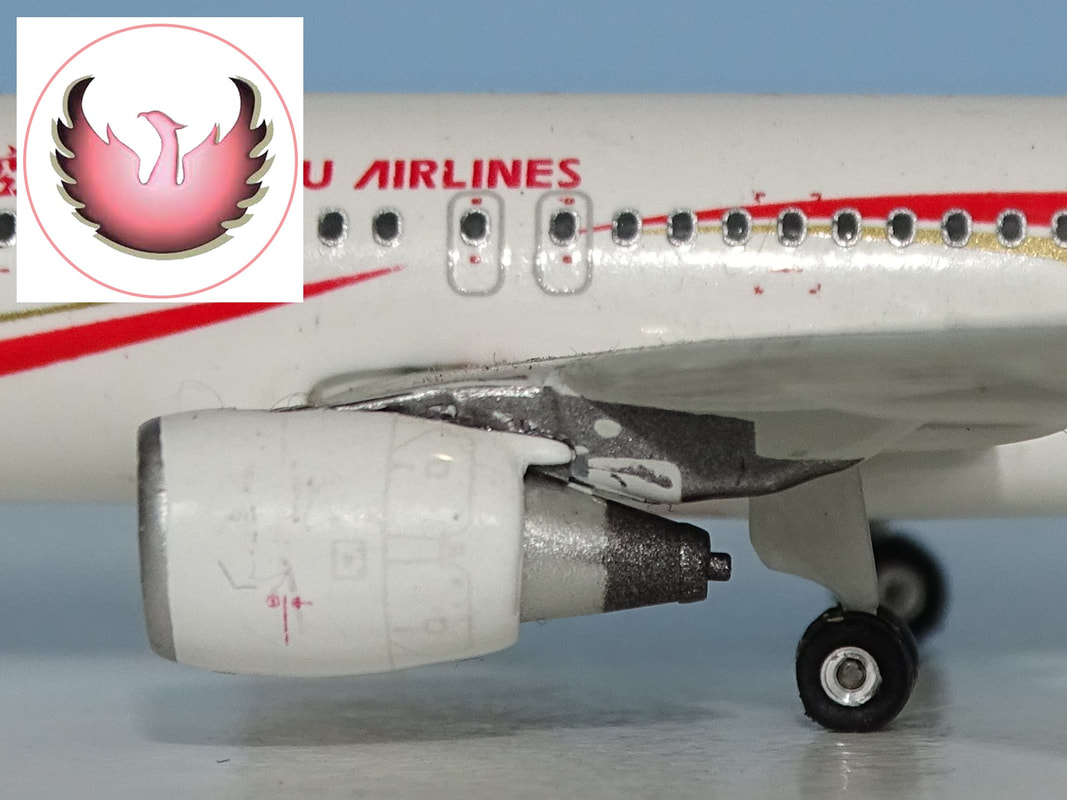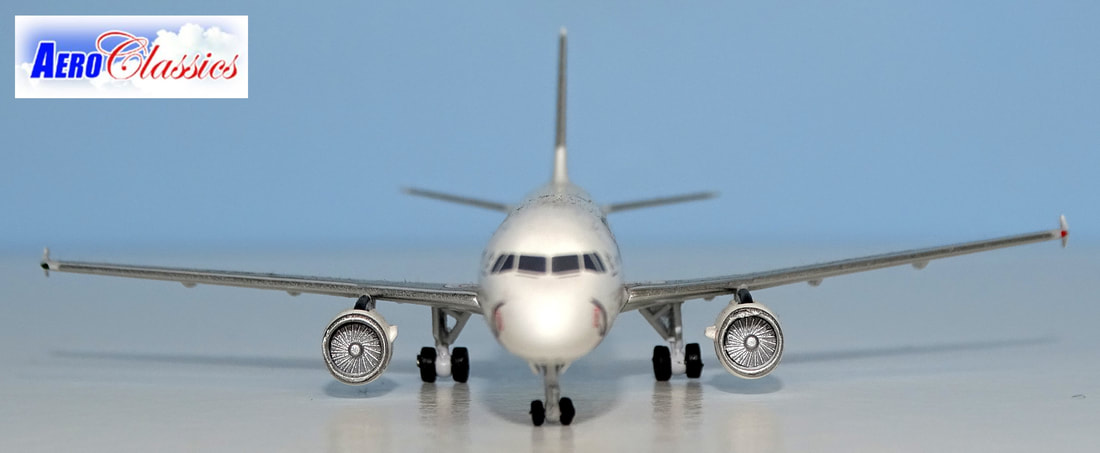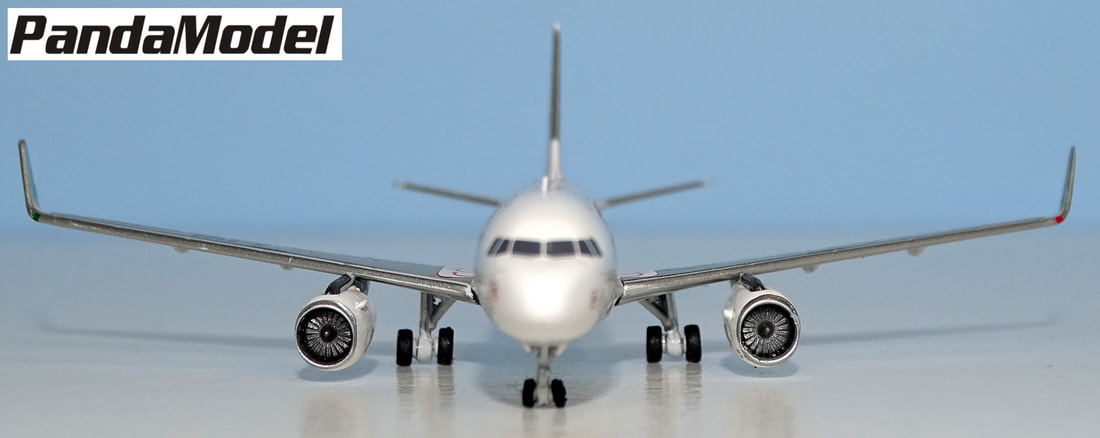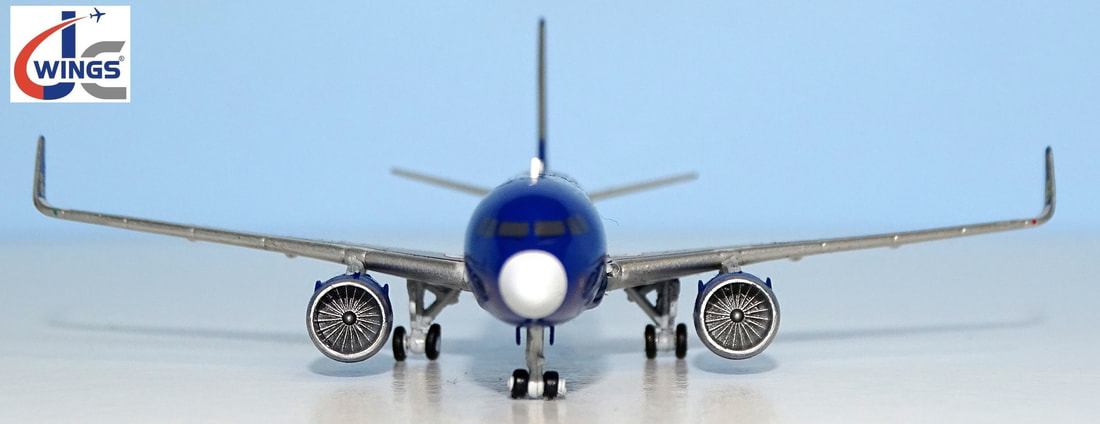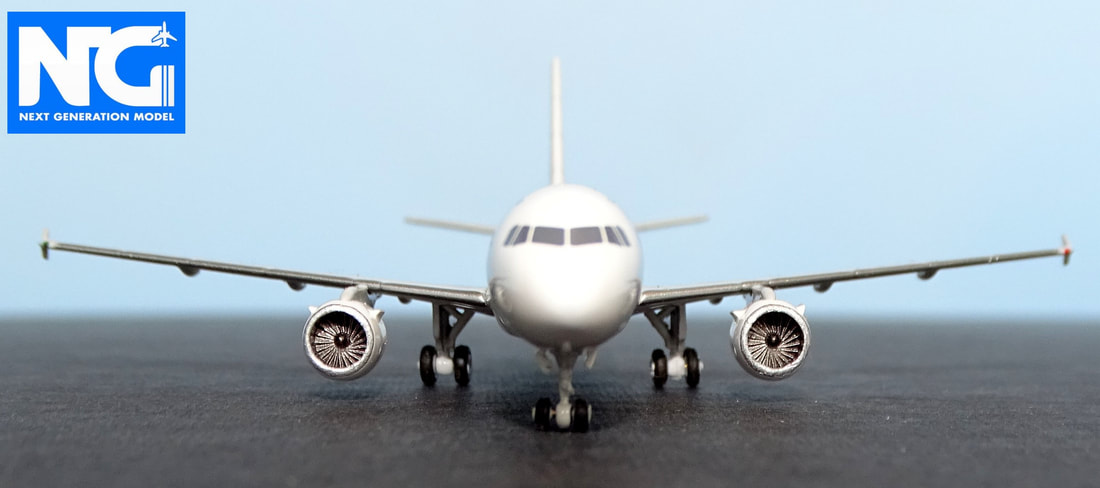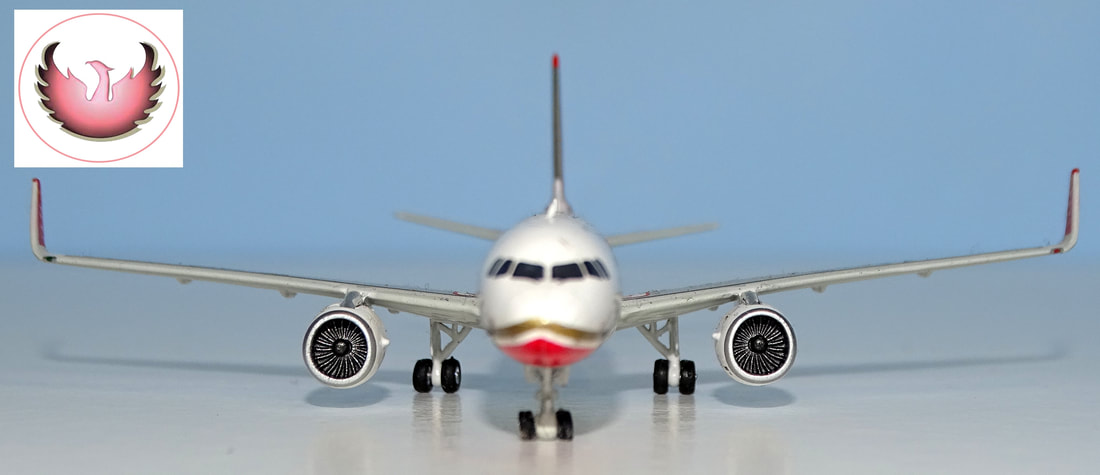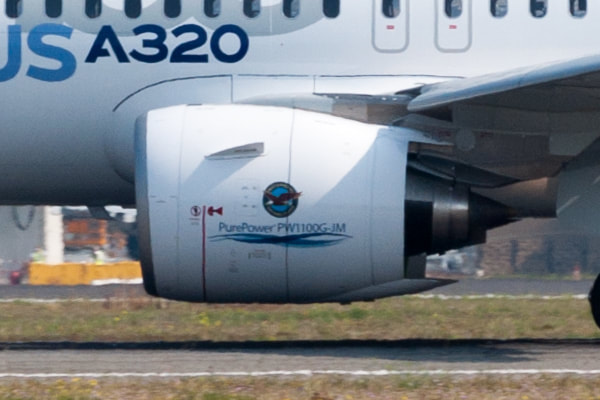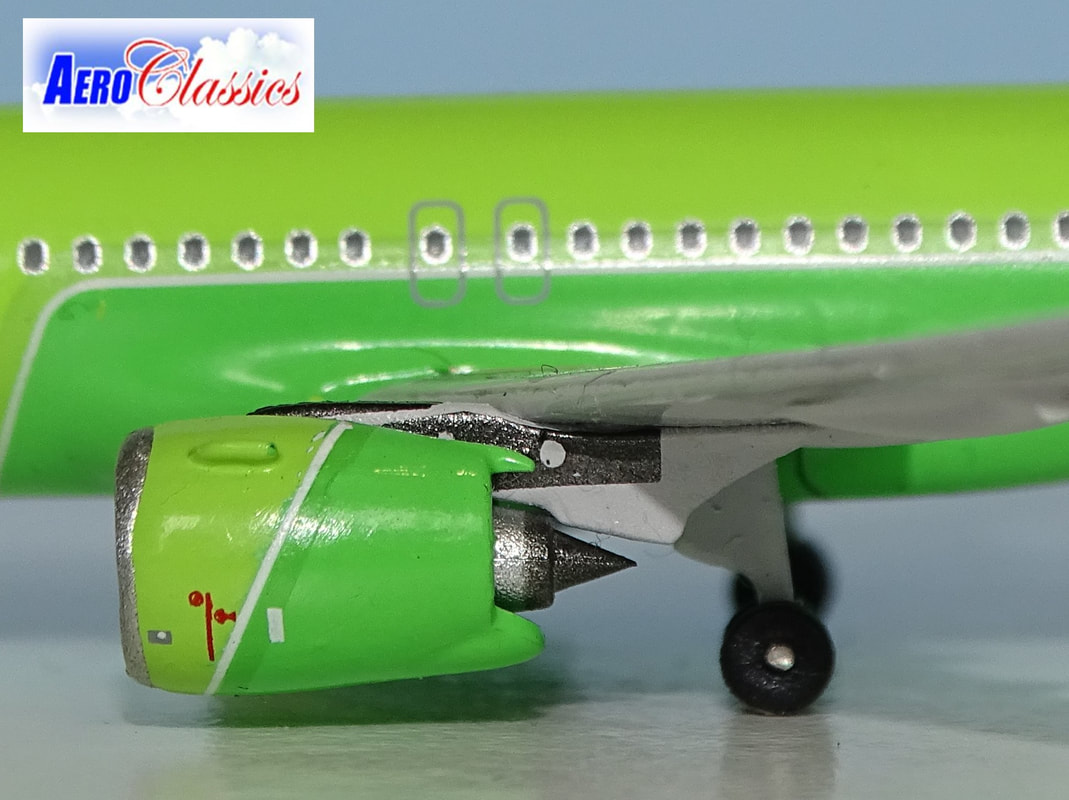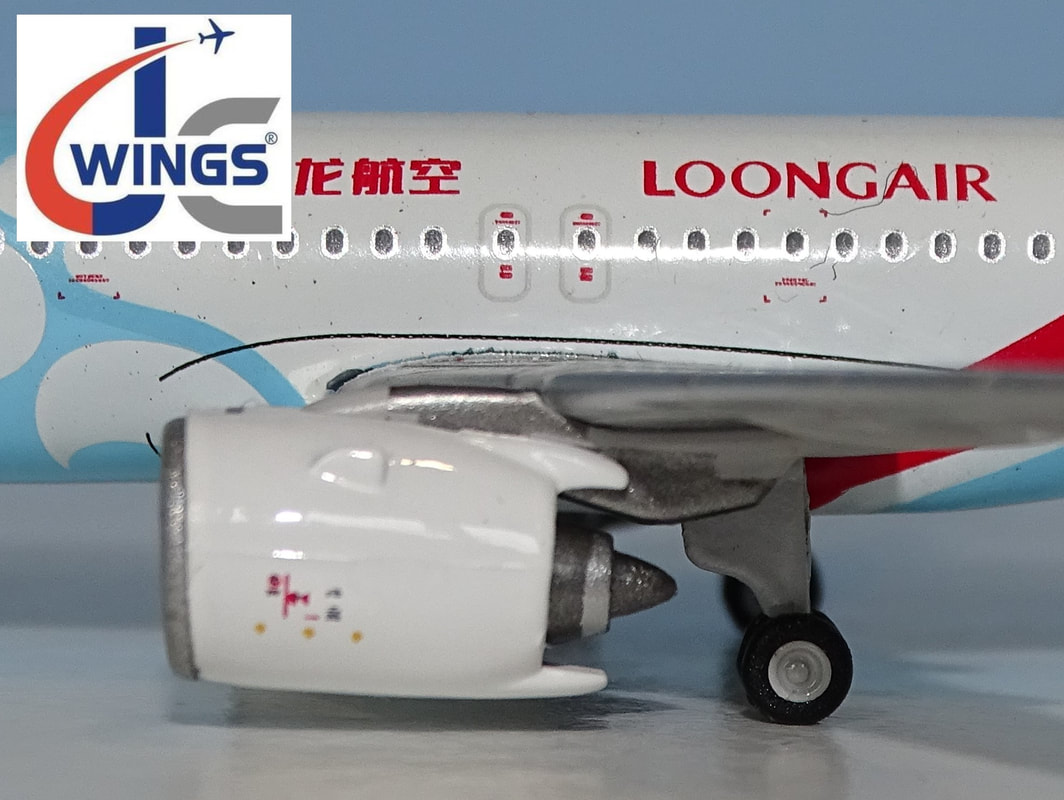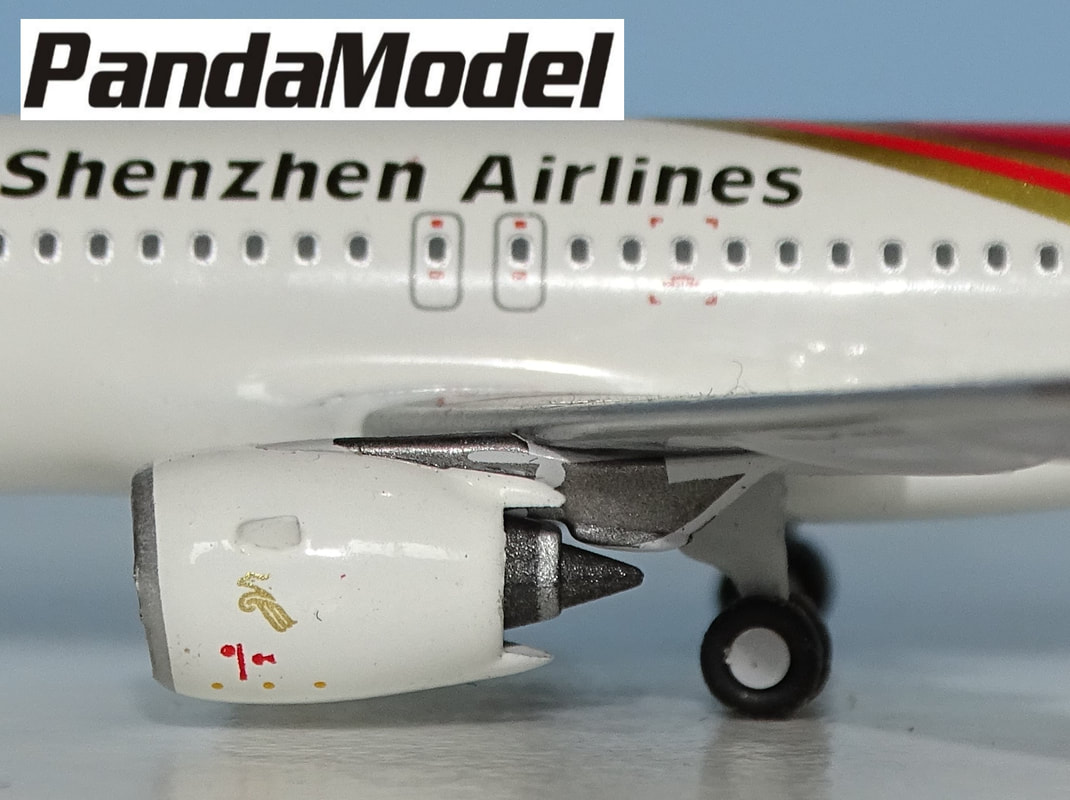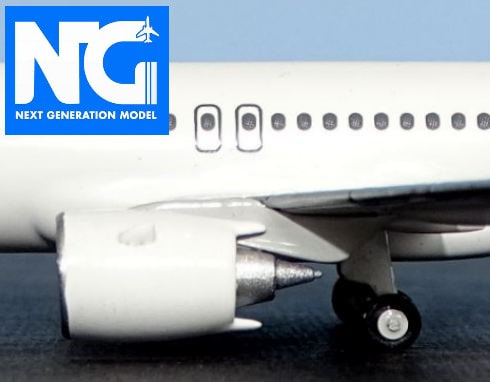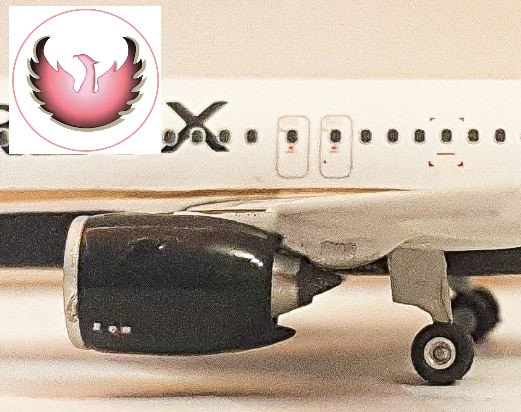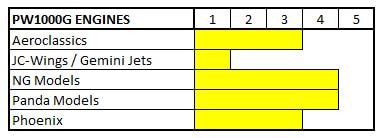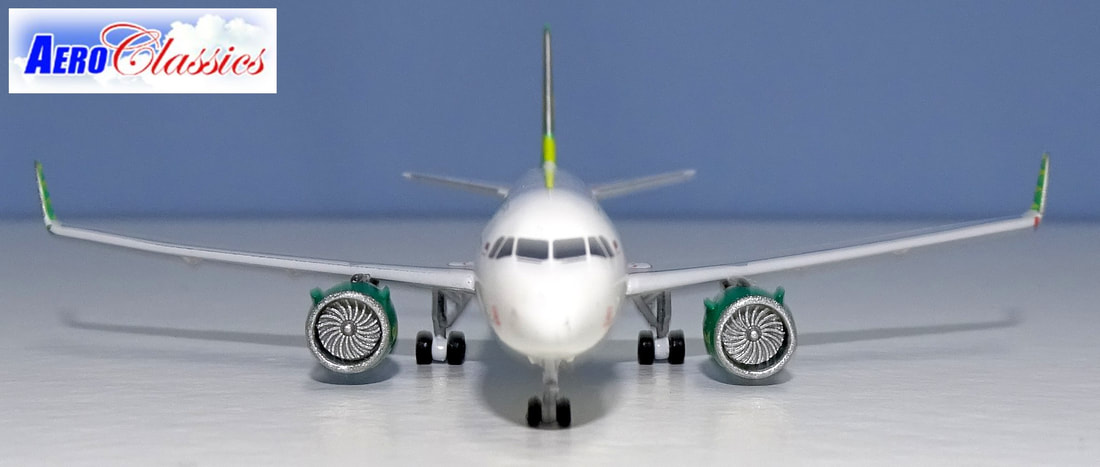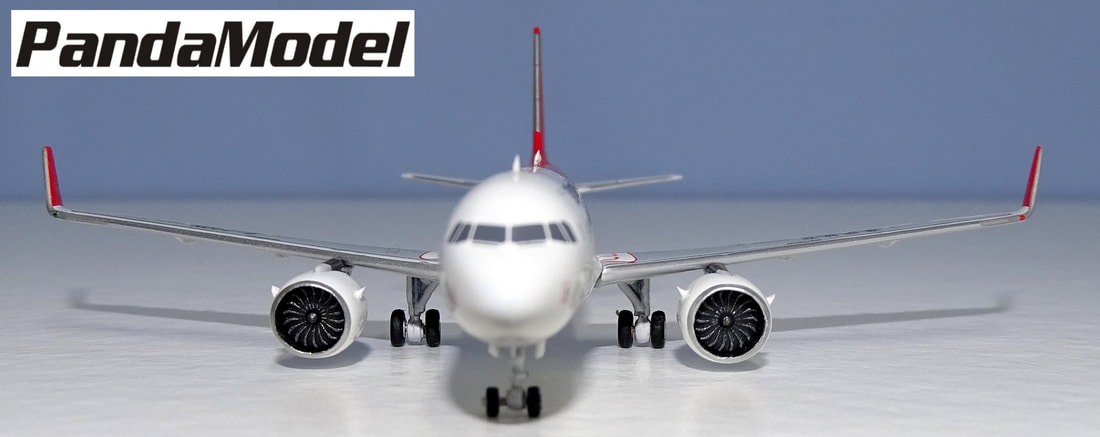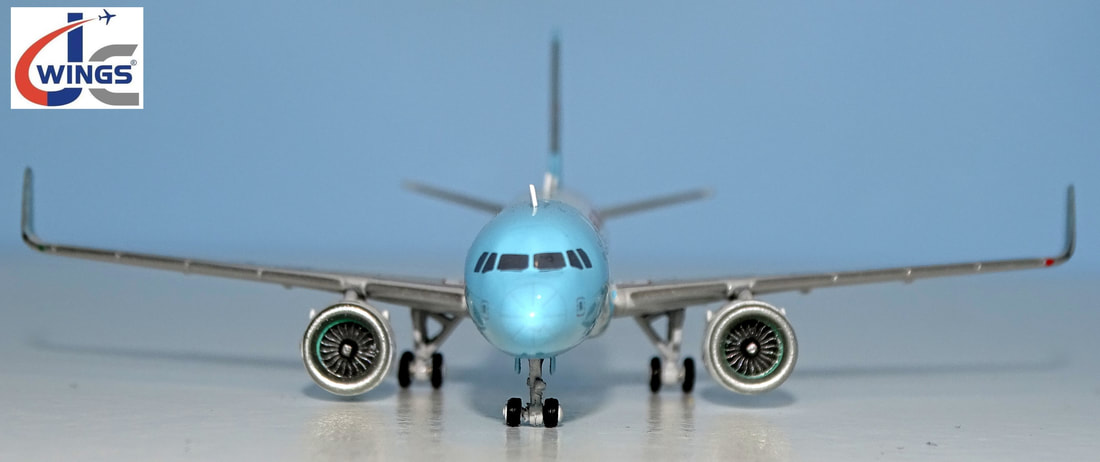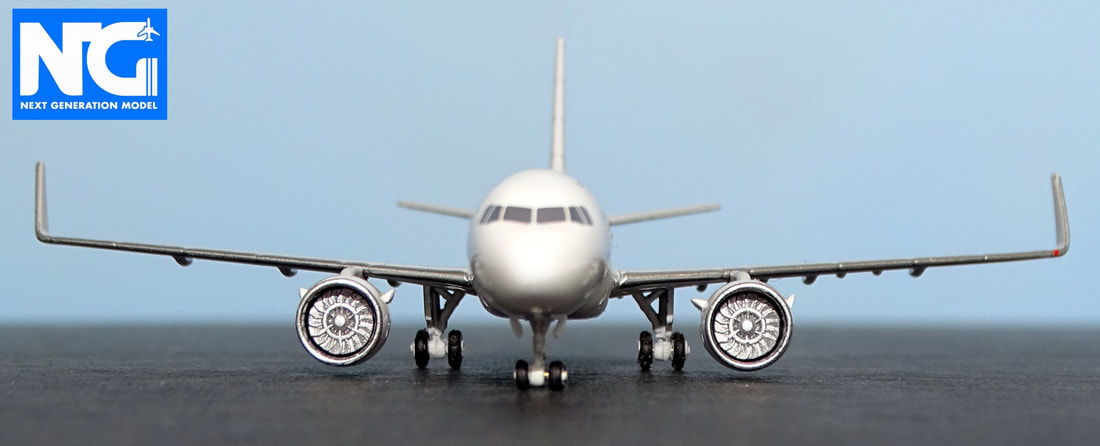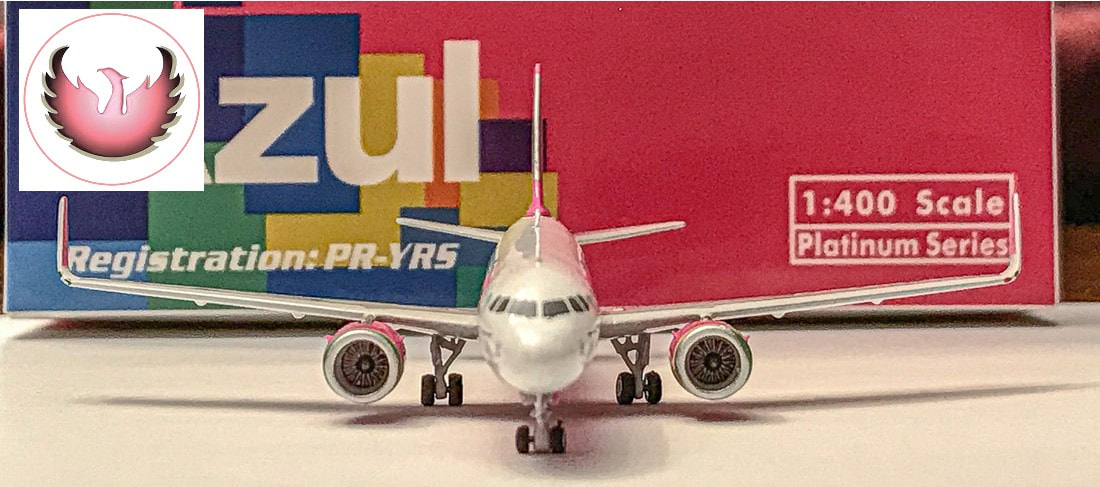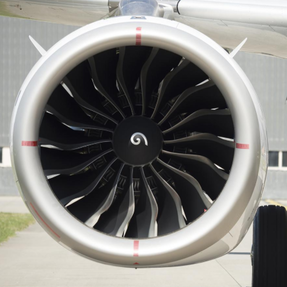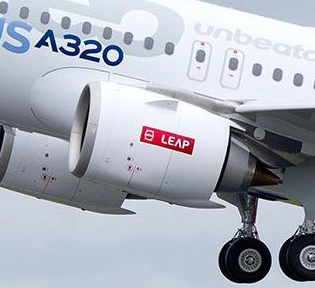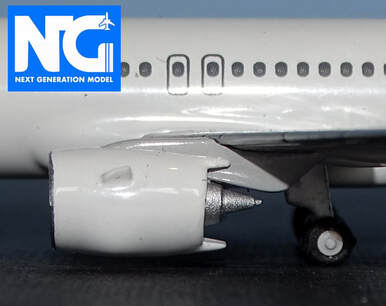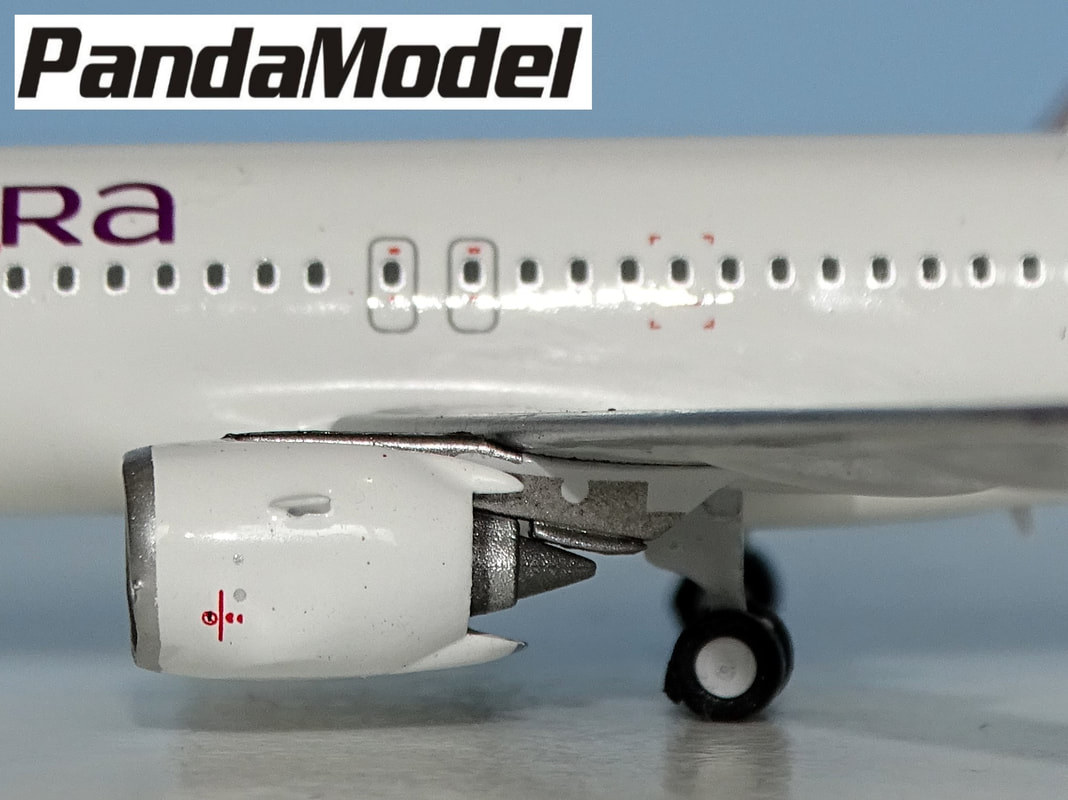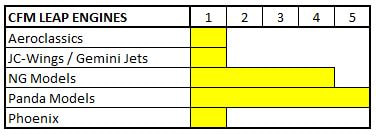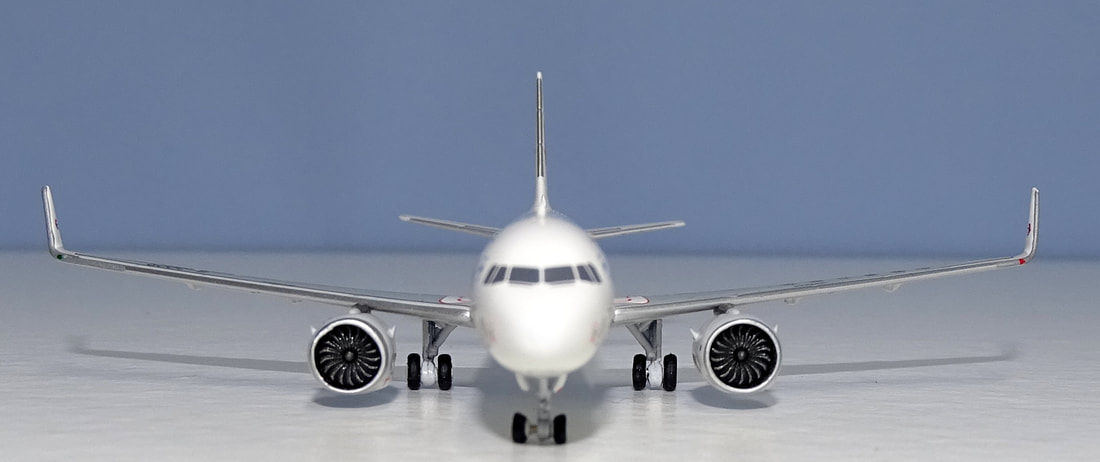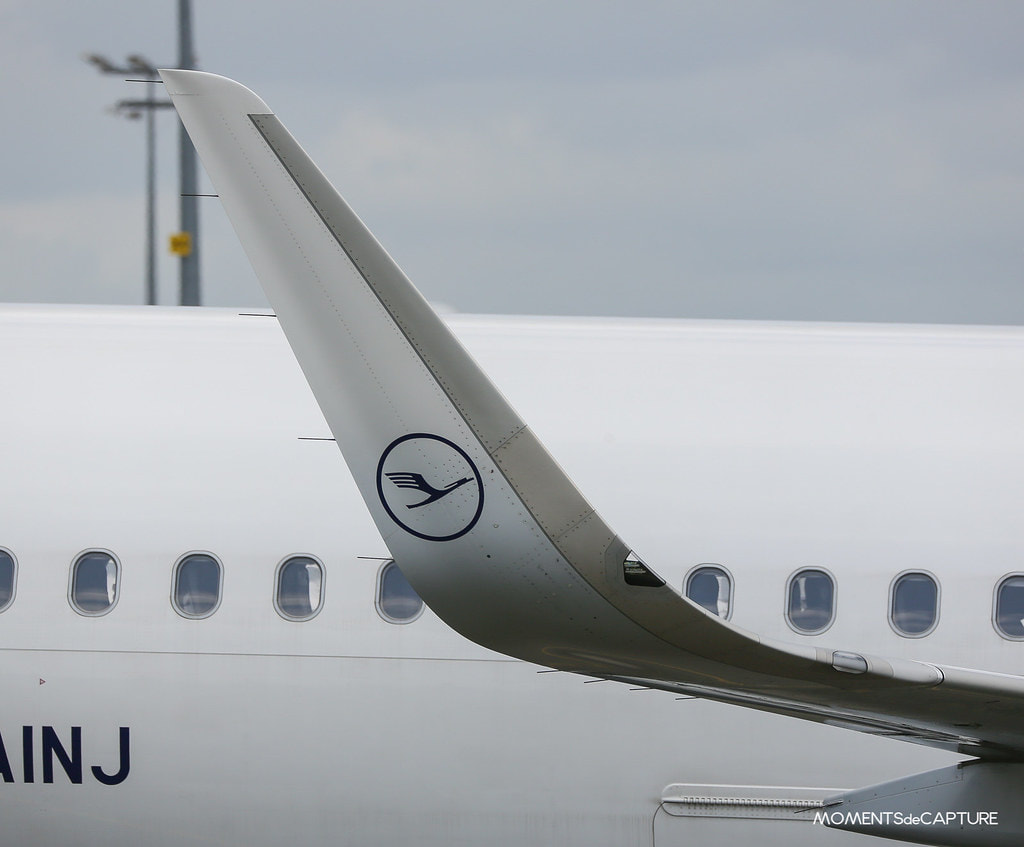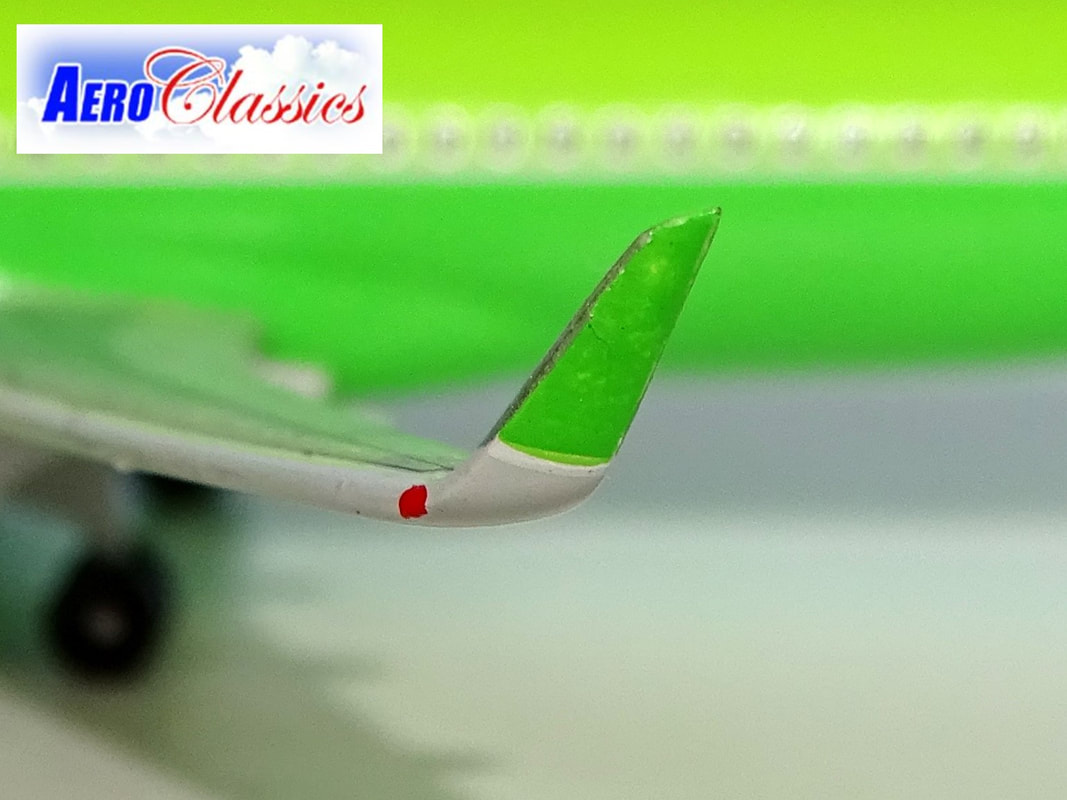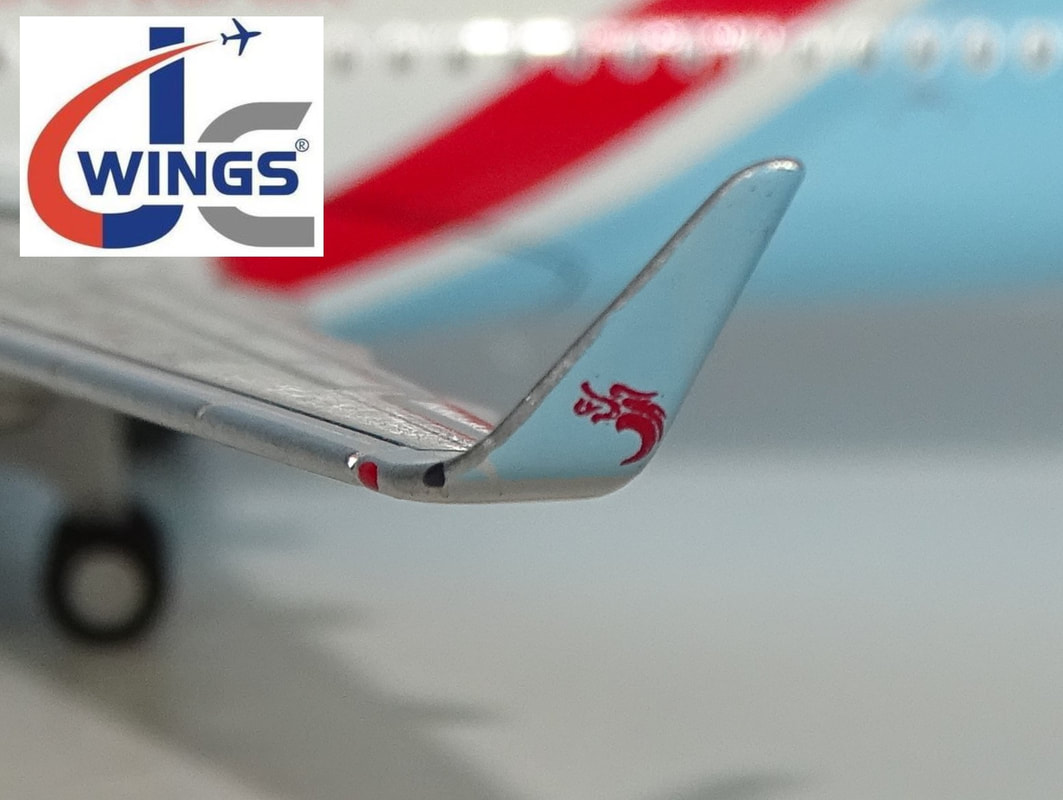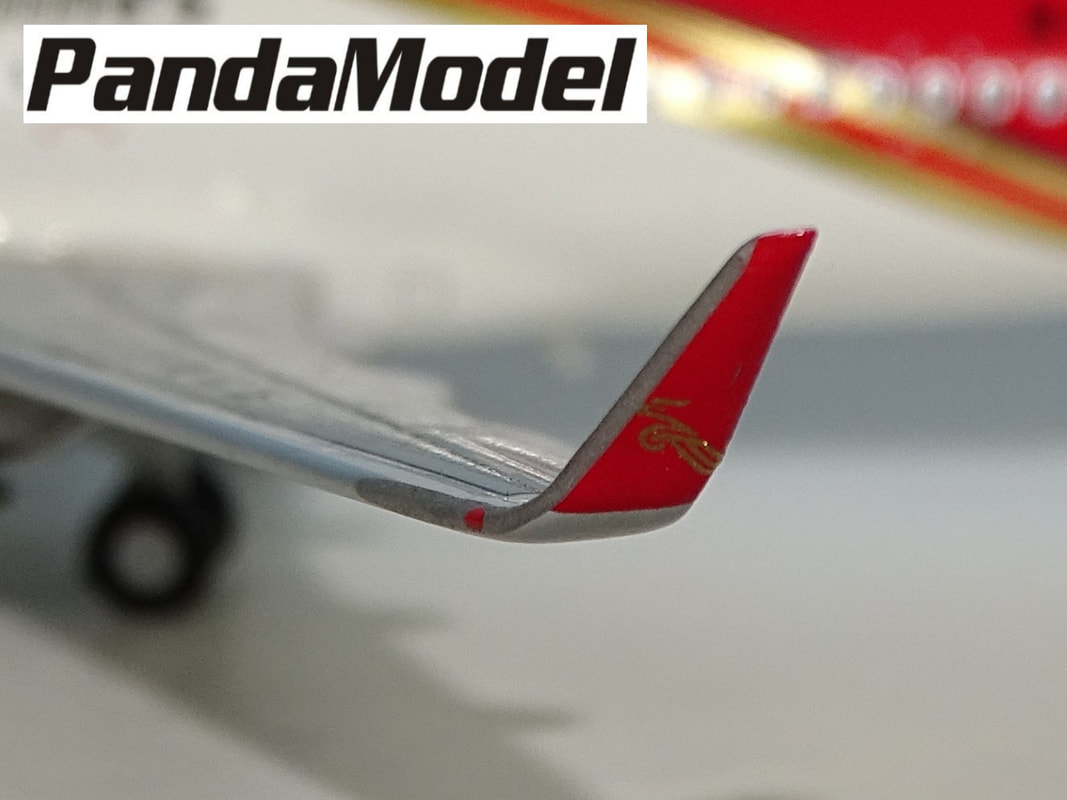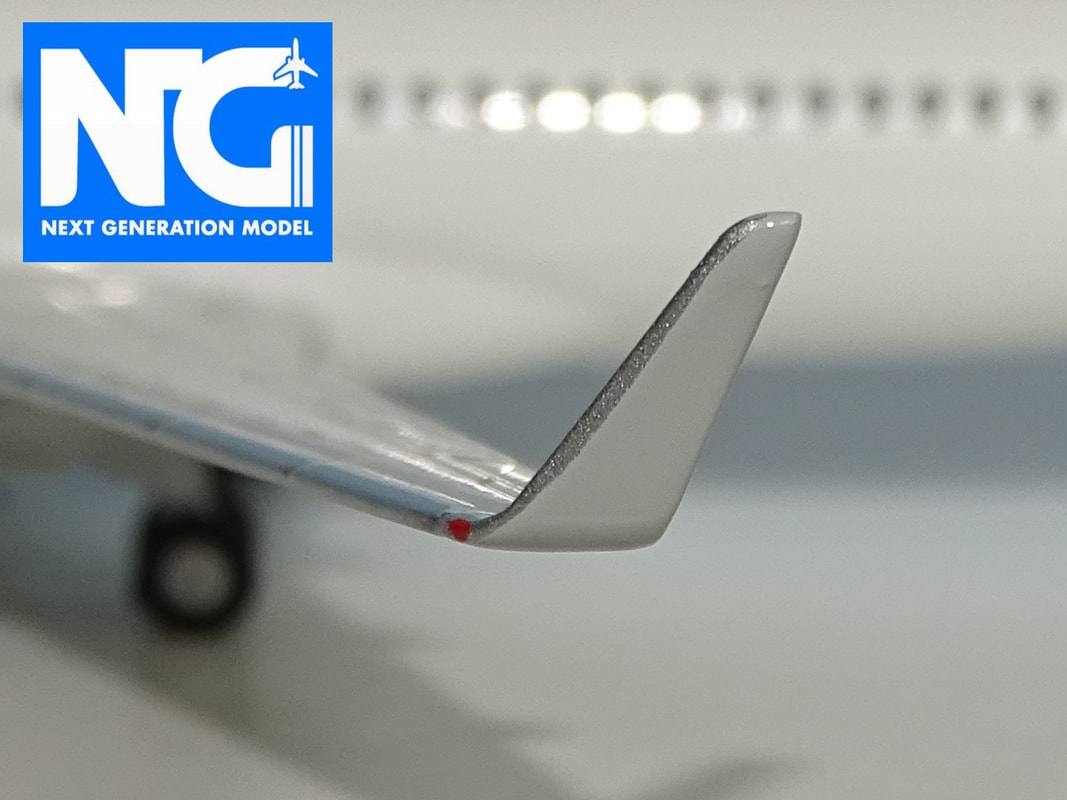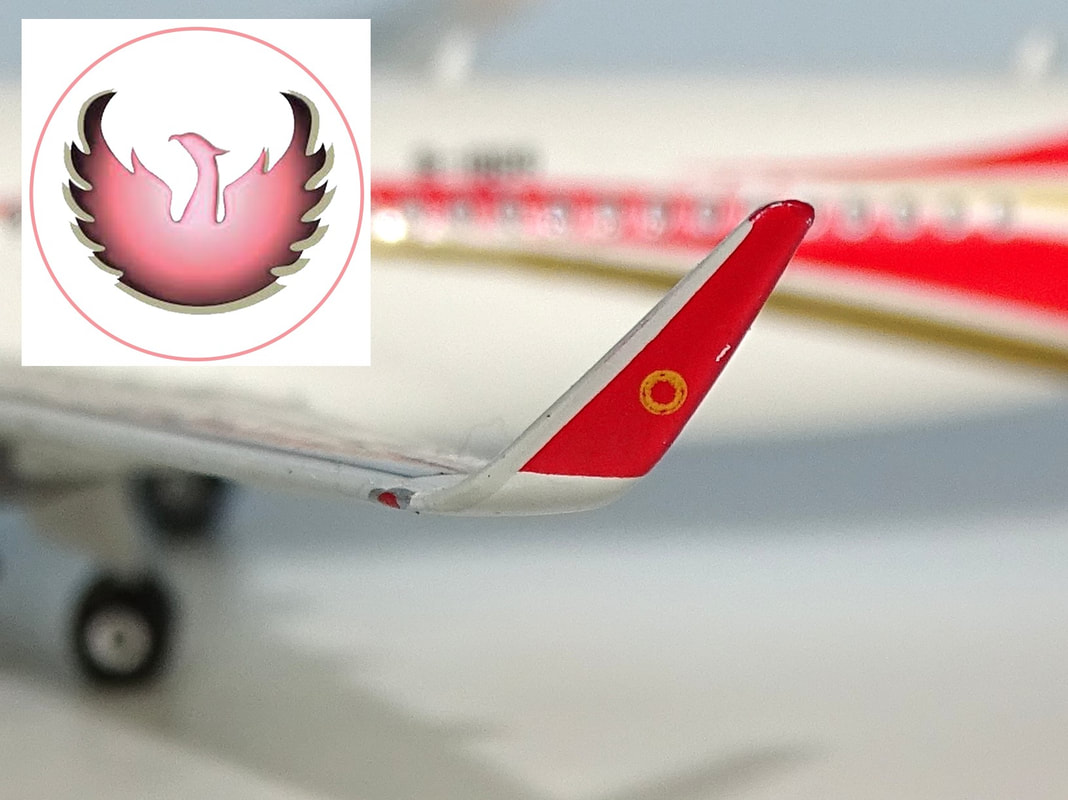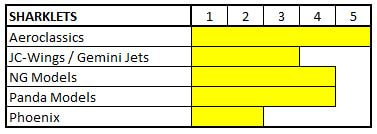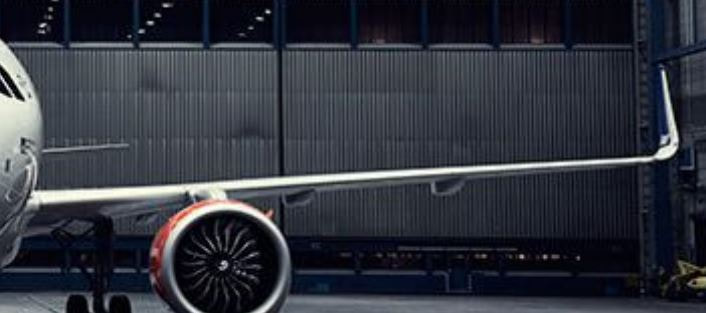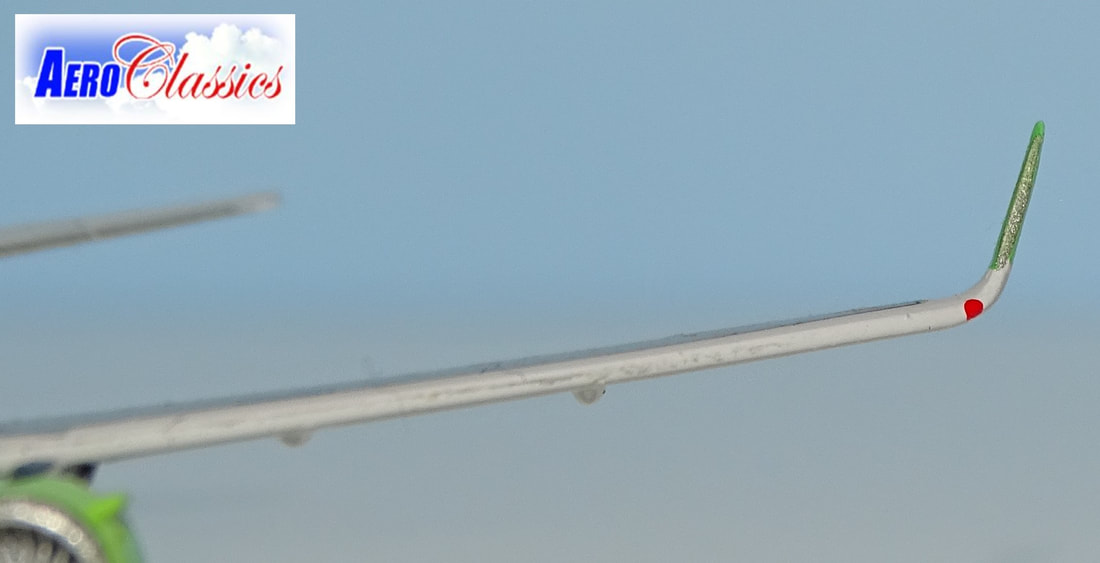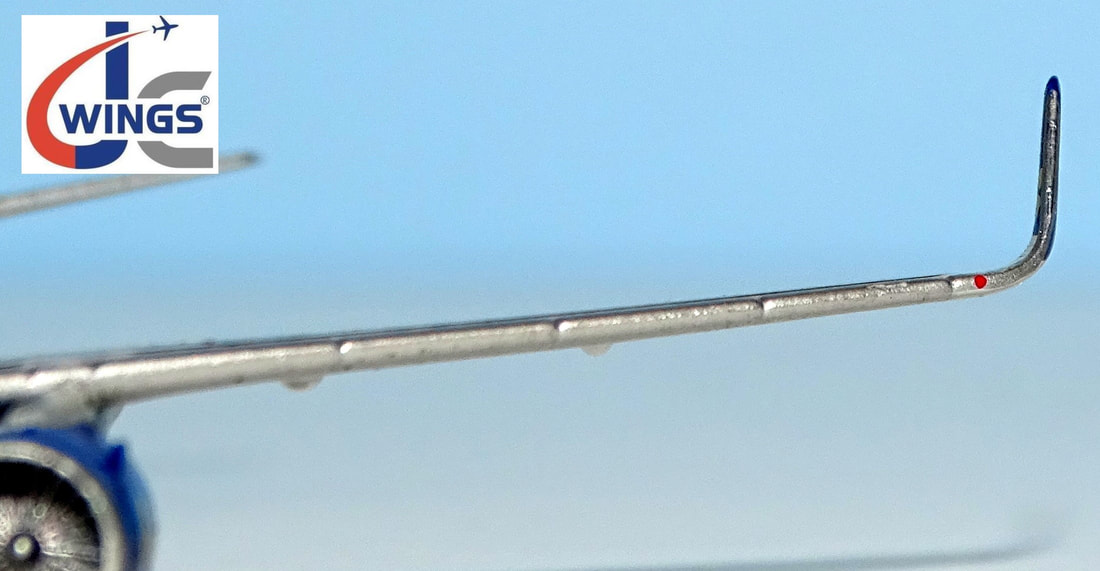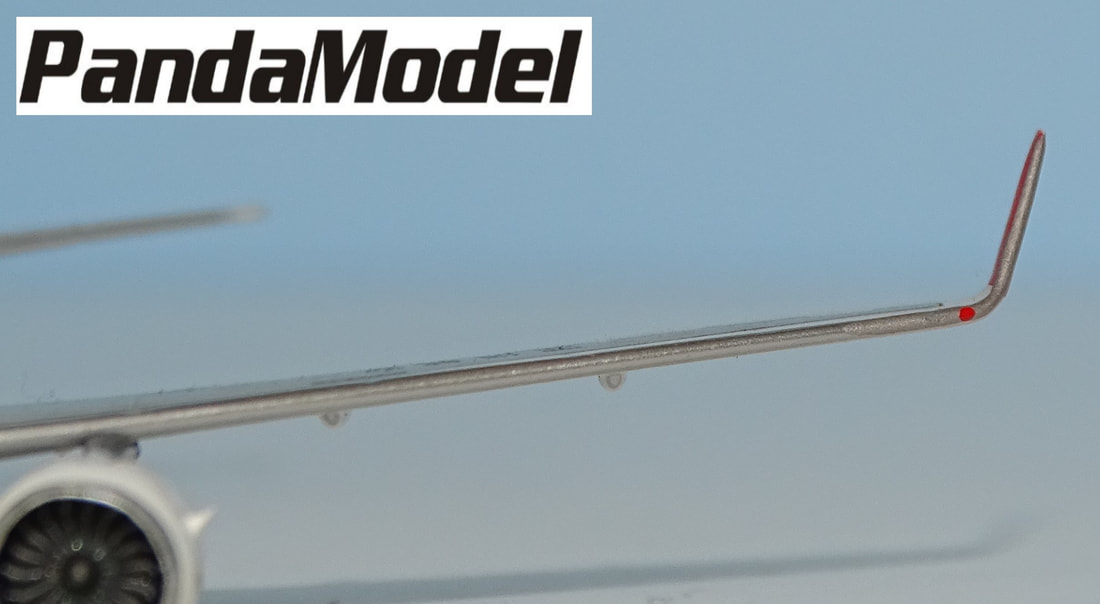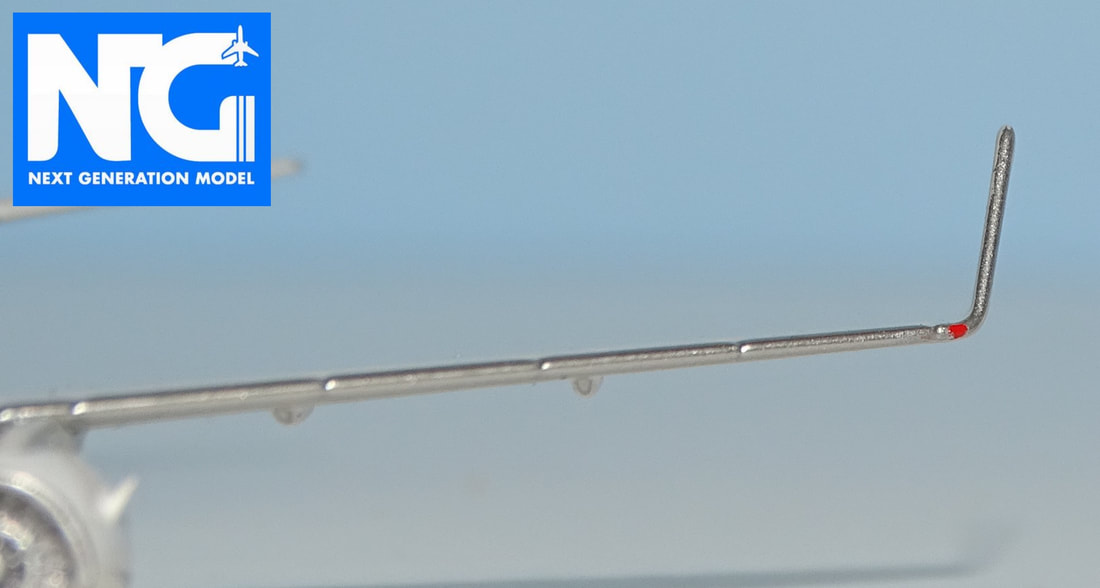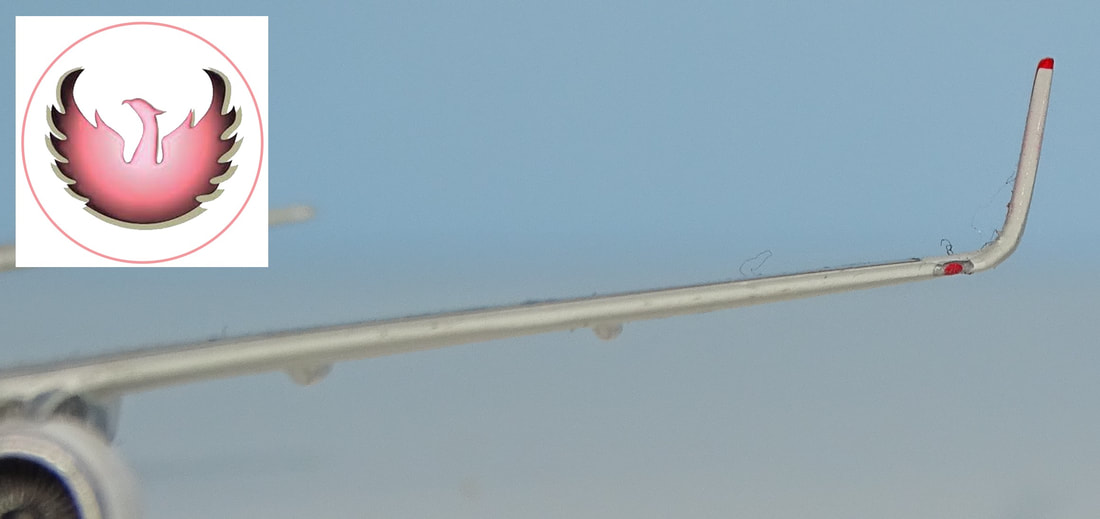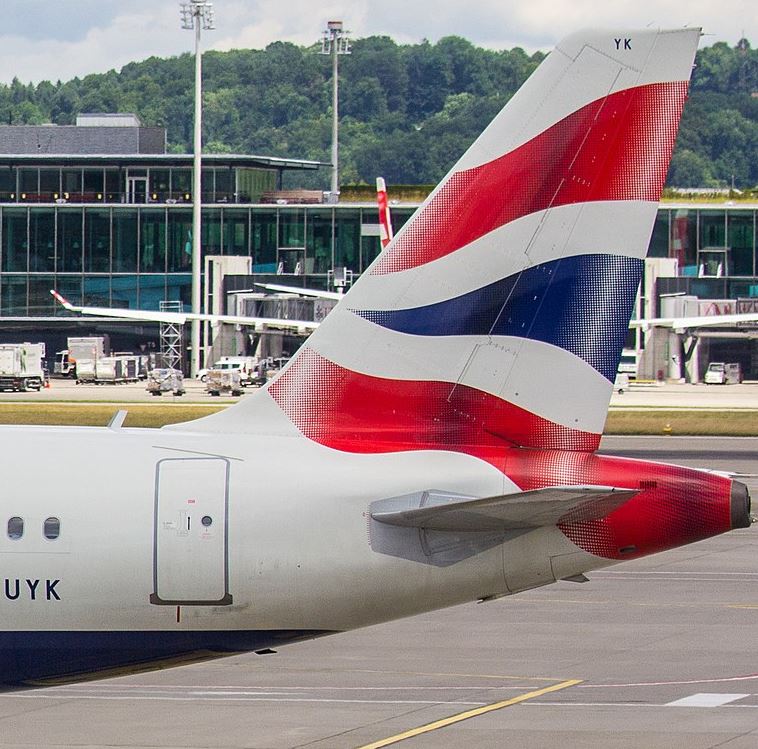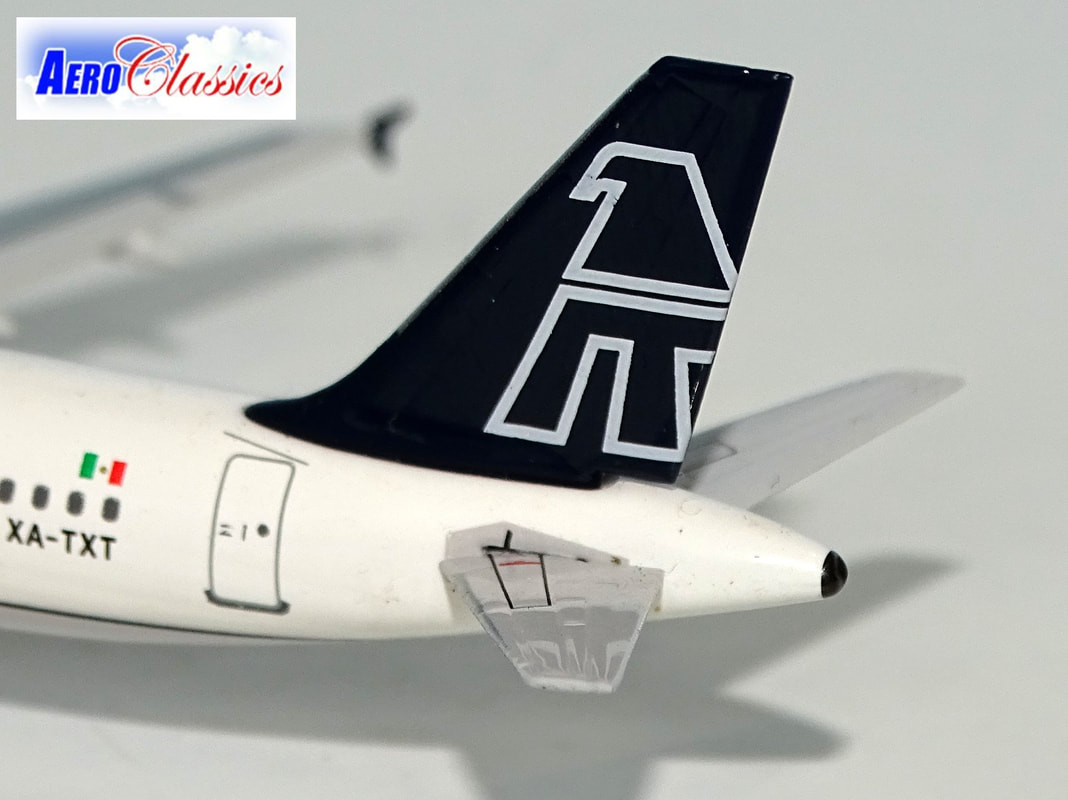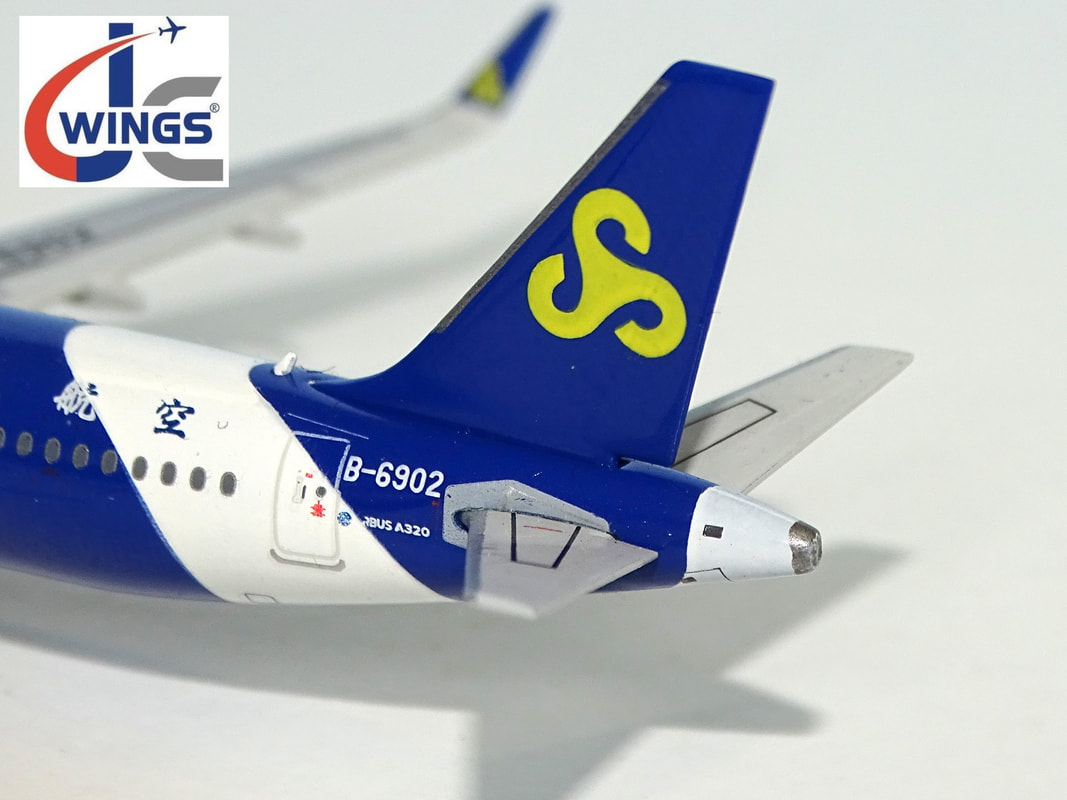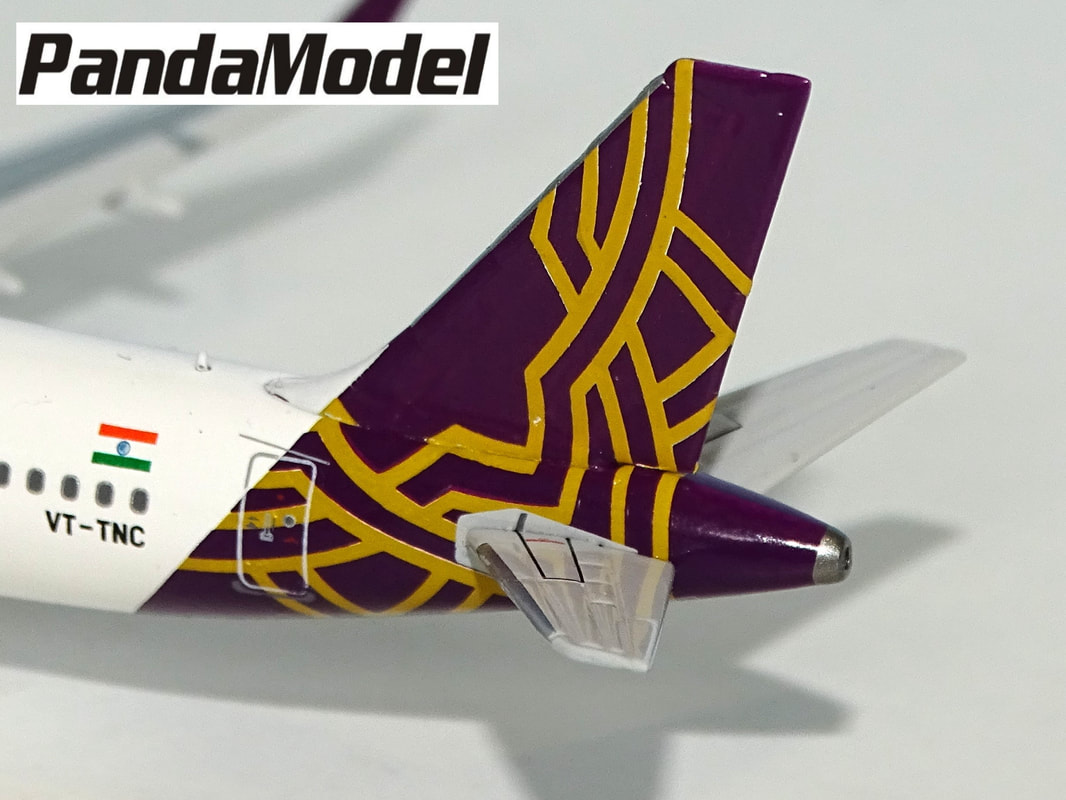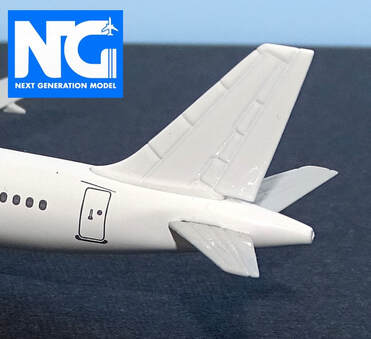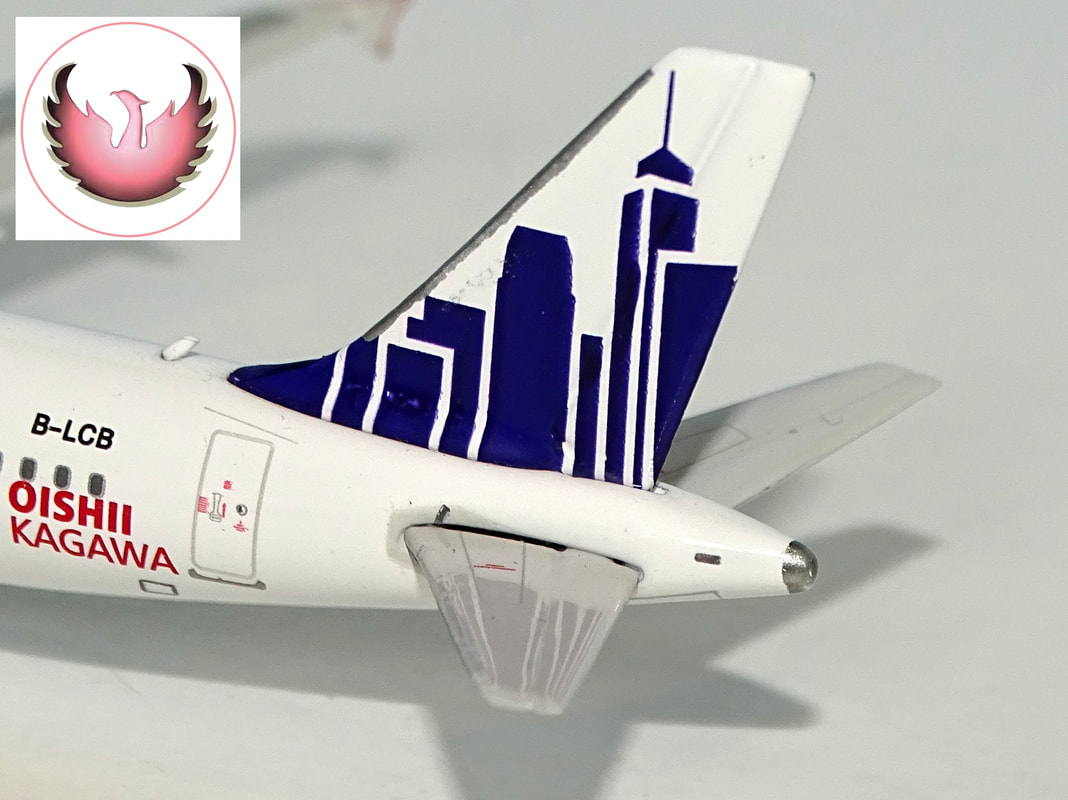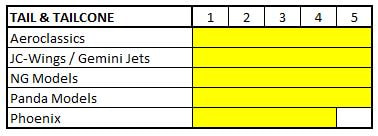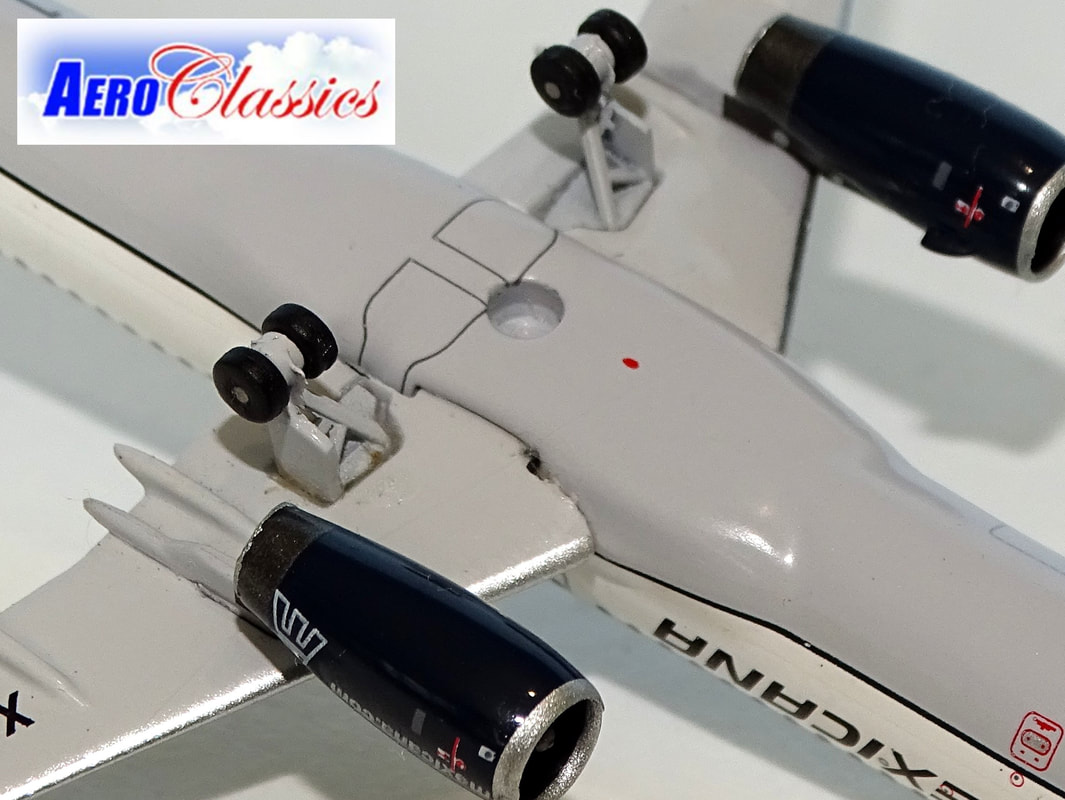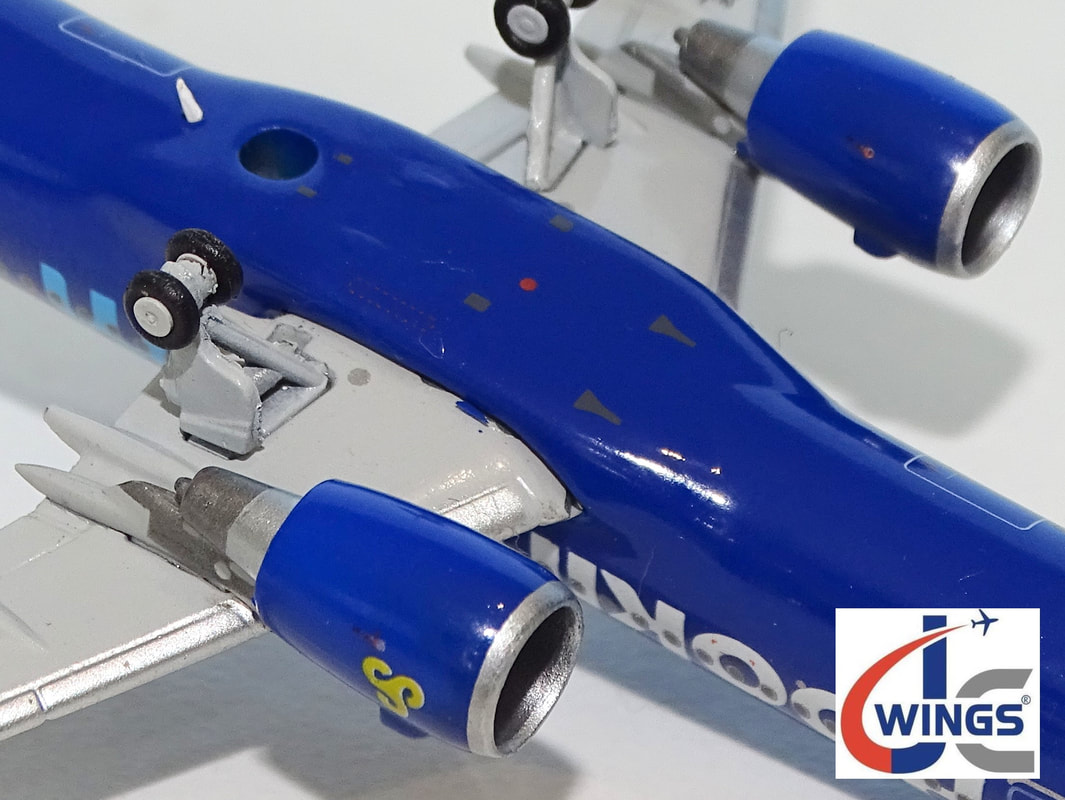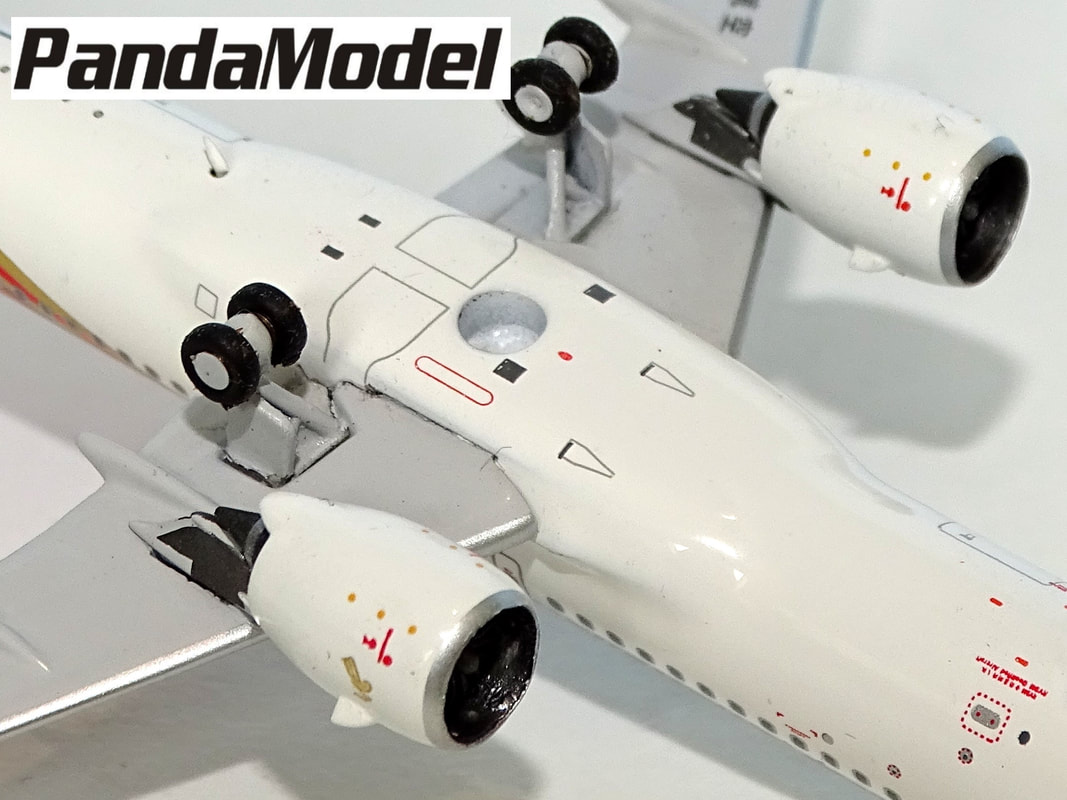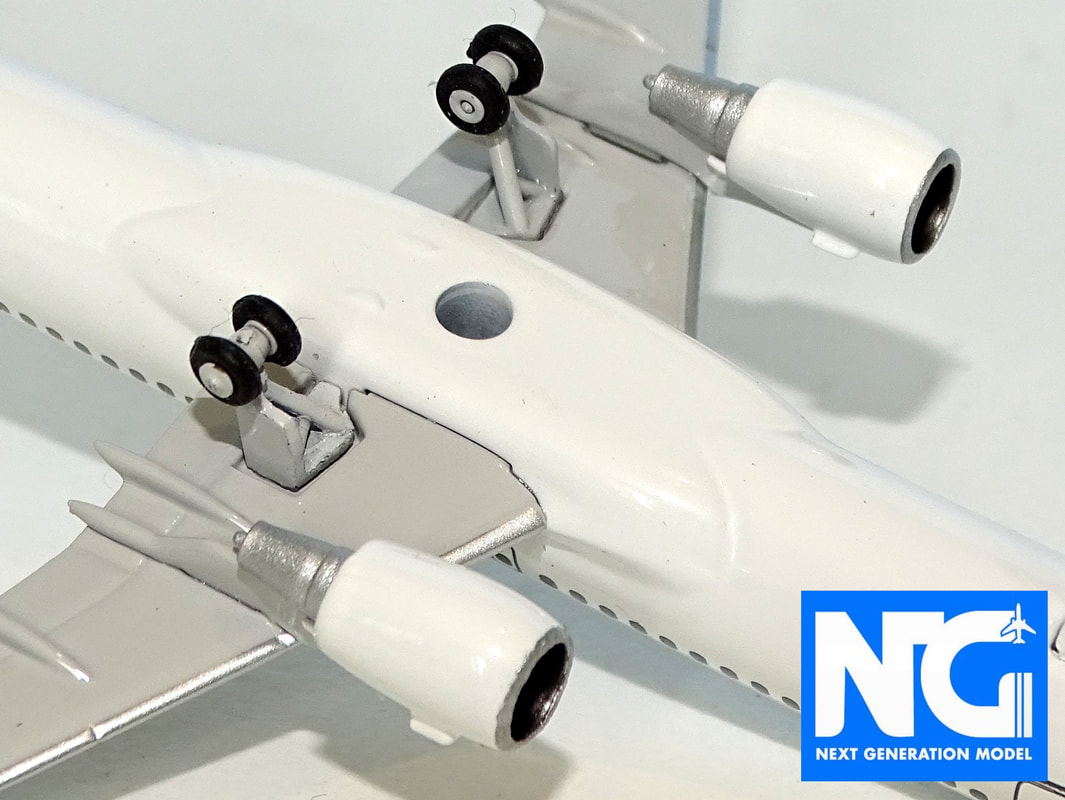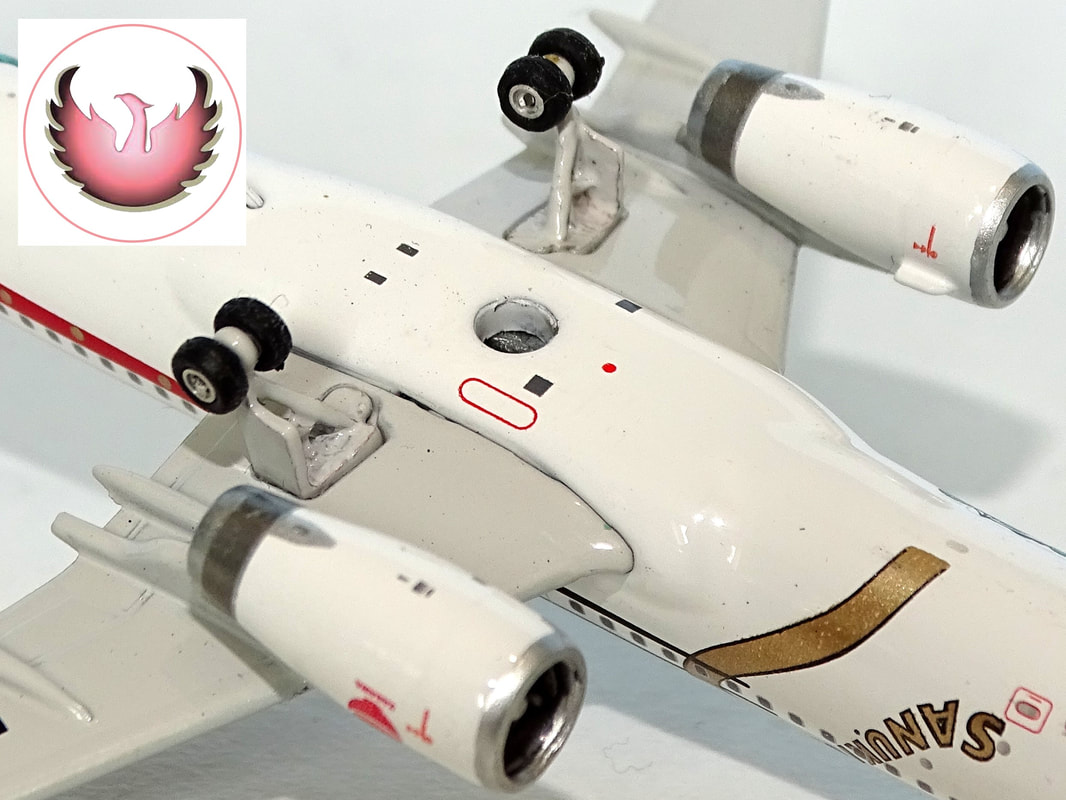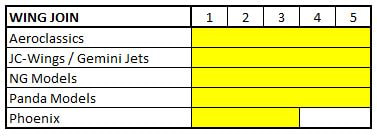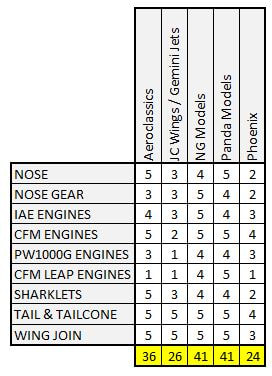Airbus A320ceo & A320neo
Detailed Mould Scoring Comparison
Updated: May 2022
Introduction
The aim of this review is to compare and contrast all 5 mould series available for the Airbus A320 in 1:400 scale diecast airliners as of mid-2022. Broadly the results can be applied to the A319 also, since it is merely a shortened version of the A320, but not entirely to the A321 as that has a different wing also.
The A320 moulds to be compared are from the following manufacturers (dates illustrate when the specific mould was introduced):
The A320 moulds to be compared are from the following manufacturers (dates illustrate when the specific mould was introduced):
- Aeroclassics (2009)
- JC Wings / Gemini Jets (2016)
- NG Models (2022)
- Panda Models (2015)
- Phoenix Models (2013)
Rules
- The review will take the form of a comparison of various areas of each mould to the real aircraft, with a score out of 5 allotted for each mould for each area. Adding the combined scores together gives you the winner.
- Some of these moulds have been modified over time (JC Wings/Gemini Jets, Phoenix and the Aeroclassics) and this review will use the latest examples for comparison.
- This review does not include old out of production moulds - for details about all A320 moulds including out of production ones see the A320 mould review:
Models Used
With four distinct engine options plus the option of wingtip fences or Sharklets on the ceo there are 6 potential combinations of A320 for each manufacturer. I have reduced this to four (the engine options) by making sure at least one model has wingtip fences and one has Sharklets.
Across the 5 manufacturers (JC Wings and Gemini Jets share the same mould) that gives 20 A320s to be looked at. In my collection I own 17 of these combinations but I have been fortunate to be able to use my friend JagT747 to fill in the Phoenix A320neo gap. As it will become obvious although there are technically 20 combinations when it comes to NEOs, where there should be 10, there are actually only 7 anyway.
Below - the models used in this review organised into a grid with engine option across the top and manufacturer along the bottom.
NOTE: Throughout this review it is important to understand that the Panda Models A320 is almost certainly a cloned version of the Aeroclassics A320 and so in most aspects of the fuselage and wings they are alike. That isn't to say they are the same all over though as there have been updates to engines, antenna and landing gear by Panda Models.
Scoring
NOSE / NOSEGEAR
NOSECONE & COCKPIT
Nose shape is key for the A320 series likeness and for me the weakest of these efforts is the Phoenix, which admittedly isn't helped by the cockpit printing. It always makes me think of a Tu-204. The JC Wings mould has had its nosecone and cockpit area modified since it was first released and the latest version is a definite improvement. Nonetheless the angle down from the cockpit is too sharp still. The other three are all very good. The Aeroclassics and Panda efforts are effectively the same due to the mould's back history and probably slightly edges out the NG version, which could perhaps do with a slightly shorter radome.
NOSEGEAR
The A320 has a nosegear which angles forward slightly. The only one of these moulds that correctly captures that is the new NG version. It also has the best detailing but is closely followed by the Panda version. Aeroclassics A320s used to have a much smaller nosewheel tyre and AC has recently increased its size (as is shown here). Sadly because they have still not got a tyre hub the nosegear now looks worse than it did before. There is too much tyre and not enough hub.
The JC Wings nosegear used to be a trainwreck however a redesign now means it is longer, thinner and better all round. It also seems better placed than it did previously. Just be careful of older releases on this mould whose nosegear is far worse. The Phoenix gear leg is rather amorphous and the gear door is also too large.
The JC Wings nosegear used to be a trainwreck however a redesign now means it is longer, thinner and better all round. It also seems better placed than it did previously. Just be careful of older releases on this mould whose nosegear is far worse. The Phoenix gear leg is rather amorphous and the gear door is also too large.
IAE ENGINES
|
There is a pleasing uniformity to the IAE engines from the side on all five of the moulds and a strong similarity in four out of the five of the pylons. The outlier is again the Phoenix mould where the pylon shape appears inaccurate and hangs the engine too low. I note that two of the five moulds have the engine strakes on the outside of the engines (JC and NG) but for an A320 they should only be on the inside (they are on both sides for the A319 and A321). I should also mention that the Aeroclassics and Panda versions do have a recurring QC issue where they are not well fitted and sometimes point upwards somewhat.
From the front the engines are all solid core. The fans are all quite good except for on the Phoenix. That version also has a massive fan hub whereas on the JC mould it is conversely too small. The other three have a nicely sized hub. From the front it also becomes apparent that the JC mould strakes are mounted too high on the nacelle. Overall the NG version has the best detailing and combination of features but is closely followed by the Aeroclassics and Panda efforts.
|
CFM56 ENGINES
The thing that stands out here is the sheer size of the JC Wings CFM engines. They are massive in comparison to everyone elses and out of scale. They are the biggest weakness of the JC A320 by far and are easily mistaken for NEO engines, which is a shame as many of their detail features are actually good. Once again also the strakes are mounted too high and too vertical on the JC engines plus they are on both sides too. Looking at the Phoenix engines and although correctly sized the pylons join to the engine very poorly above the nacelle. I haven't got any major complaints about the other three aside from the strakes being on both sides of the NG engines (which I'm sure will be fixed).
PW1000G ENGINES
Moving into the NEO territory of the PW1000G and once again the JC Wings engines are horrendously oversized and poorly hun from the pylon too boot. They have upgraded them with hollow fans but they are monstrous and rule almost all JC Wings / Gemini Jets A320neos out of consideration for purchase. The other examples are all better shaped but the Aeroclassics version has a rather straight side profile at the rim, chunky lower rear portion and the side fins are too high on it. The Phoenix engines are fitted with their new spinning blades but in doing this they have lost the profile of the front of the engine, which also has very thick rims.
Note below that both Aeroclassics and Panda have fitted the fanblades into the engines so that they are opposite of each other. It's a QC issue but an annoying one. The fans should obviously go round the same way on both engines. The NG Models engines have the best overall set of features but I admit I am not taken with their fanblade structure. This looks better on the Panda and Aeroclassics versions.
CFM LEAP ENGINES
The nacelles for the CFM LEAP engines are not the same as those for the PW1000Gs. There is a distinctive bulge on the lower left side hosing hydraulics. Despite this it seems Aeroclassics, JC Wings/Gemini and Phoenix all would rather you didn't notice this as none have moulded a CFM LEAP nacelle. I admit in other ways the engines so look similar but it is lazy. The NG and Panda versions both look good but once again the fanblades of the Panda version look better to me.
SHARKLETS
When it comes to the Sharklets I'd say the Aeroclassics, Panda and NG versions are closest to reality. They all have the curve at the upper side moving to a point at the rear. If anything the Aeroclassics version looks best. The JC Wings version does curve but rather sloppily while the shape of the Phoenix Sharklets is inaccurate at the tips - way too rounded.
TAIL & TAILCONE
Heavy rework on the part of JC Wings has saved the tailcone of their mould, which was once too short and chunky. It now looks good, in fact all the tailcones do. The tail shapes are all fine as well, however the Phoenix tail is noticeably chunky at its base and is the only one that doesn't have the free rudder effect. The NG version has a lot of line detailing, which the others do have but is obscured by the printing.
UNDERSIDE & FUSELAGE / WING JOIN
The wing join on four of the five is quite similar and accurate. By stepping in the wing their is room for the fuselage fairing except for on the Phoenix. They have just got a straight wing, which cuts out the fairing and makes their A320 rather flat sided around the wing. Underside detailing is decent but NG's new mould is the only one to show the two small bumps related to the maingear doors, which Phoenix doesn't even bother to print on!
AERIALS
I won't score the aerials because the NG samples aren't fitted with them yet and because Aeroclassics chooses to leave them off so it will skew the scoring. Just be aware that they are missing from Aeroclassics, slightly too tall on the JC Wings and not especially well shaped on the Phoenix. The Panda mould has the best aerials.
Summary
|
The top score available is 45.
As always with these reviews I am sure you could argue the finer details if you wish, but the trends are quite clear when the scores are added up. The new NG Models mould competes very well and is the match of the best existing mould - the Panda Models version.
The Aeroclassics and Panda versions have the benefit of starting with excellent base A320 moulds but Aeroclassics rather shoot themselves in the foot with their simple landing gear, refusal to add aerials and lack of a CFM LEAP engine.
The JC Wings / Gemini Jets mould has improved a lot since it was first released but at least for the CFM and NEO version is massively hamstrung by the awful engines.
Even with a headstart from having better sized engines than the JC Wings edition the Phoenix mould brings up the rear. Although the mould looks ok at distance in detail there are issues everywhere and nowhere does it score a 5 out of 5.
|
With the Aviation400 mould also on the horizon I would expect another strong contender to join the field. Phoenix need to start again but JC Wings could replace the engines and pylons and their mould would potentially gain a lot of ground. Ignoring all engine scores and the Phoenix gets 13/25, the JC gets 19/25 while the other three moulds all score 23.
